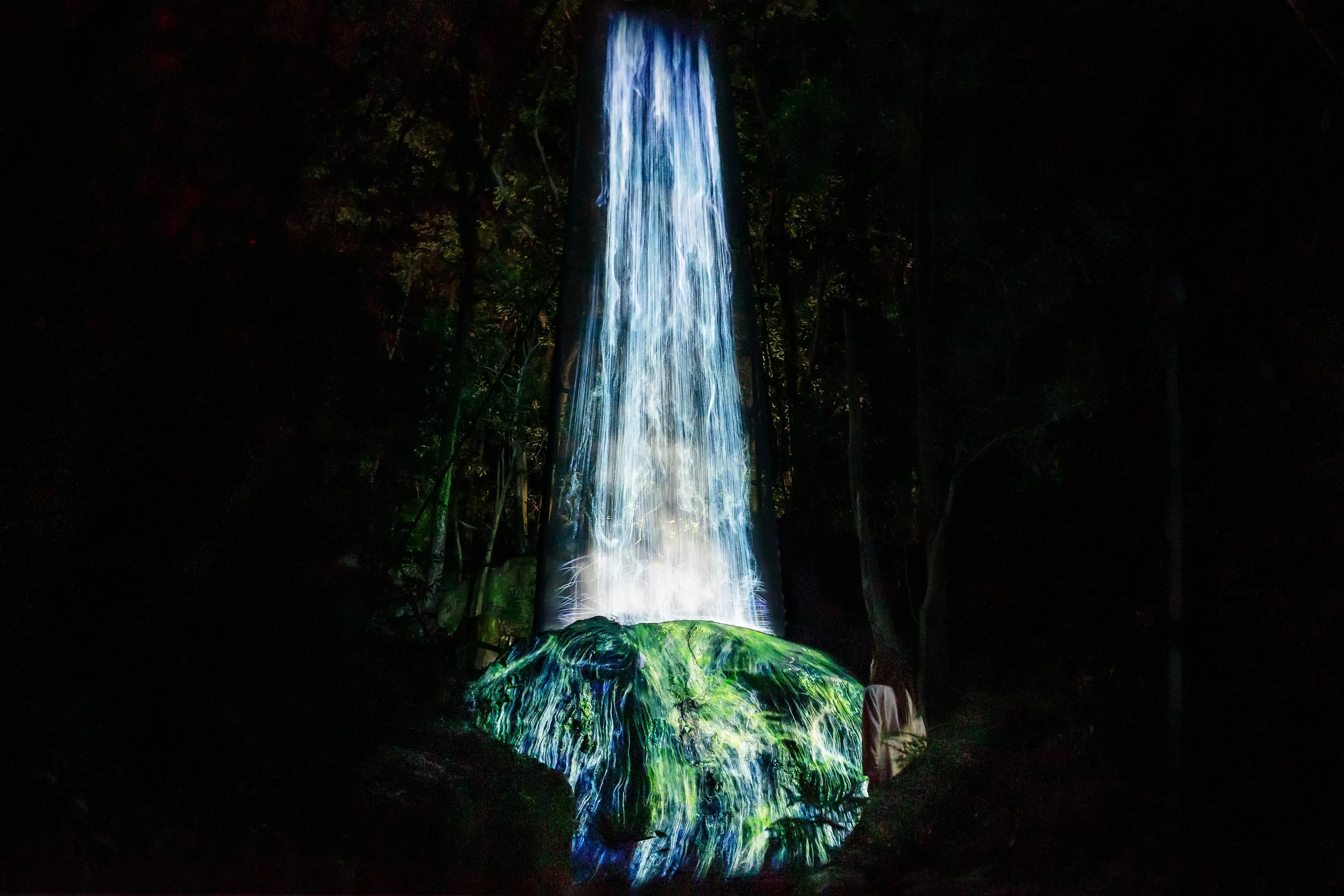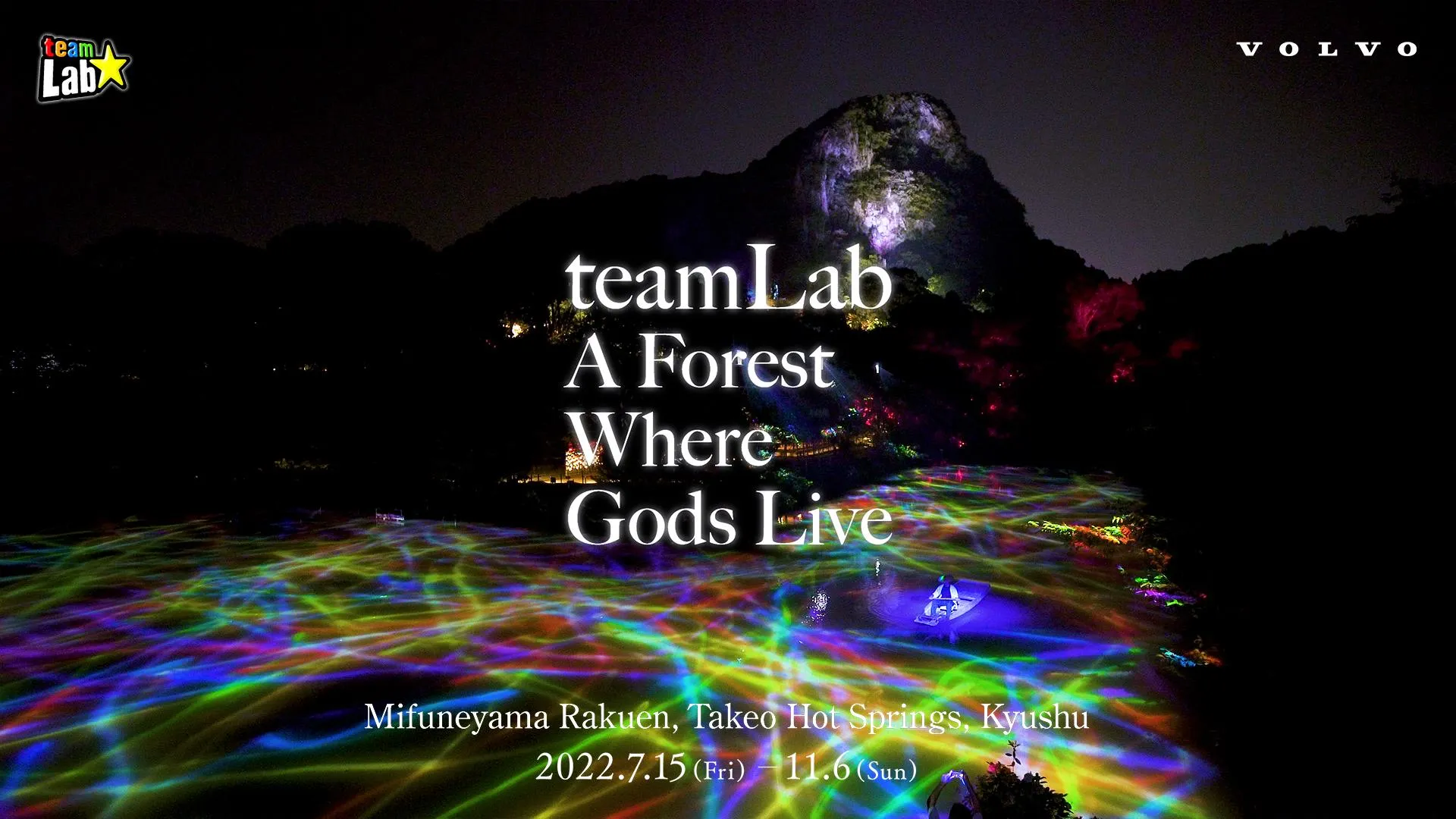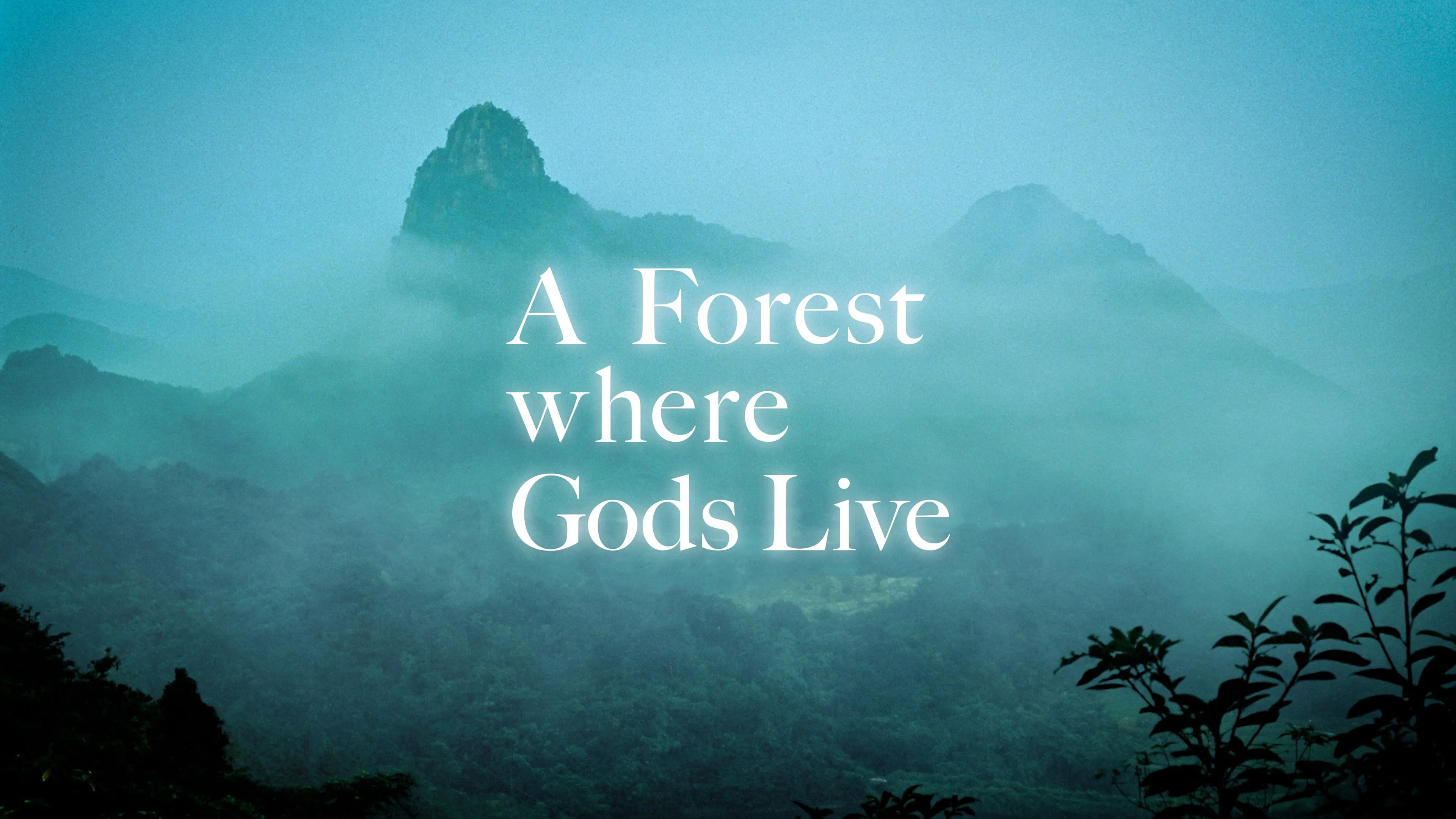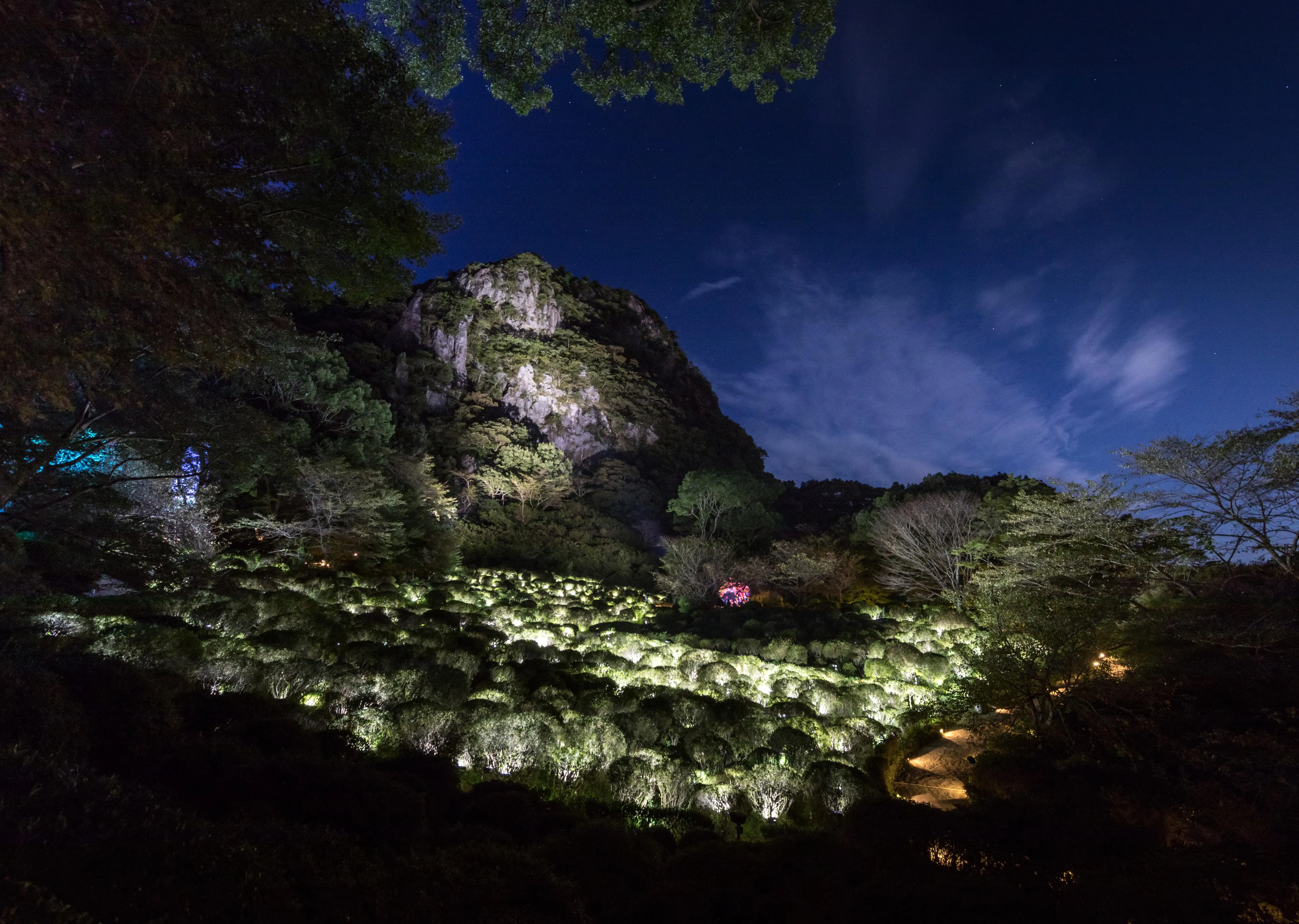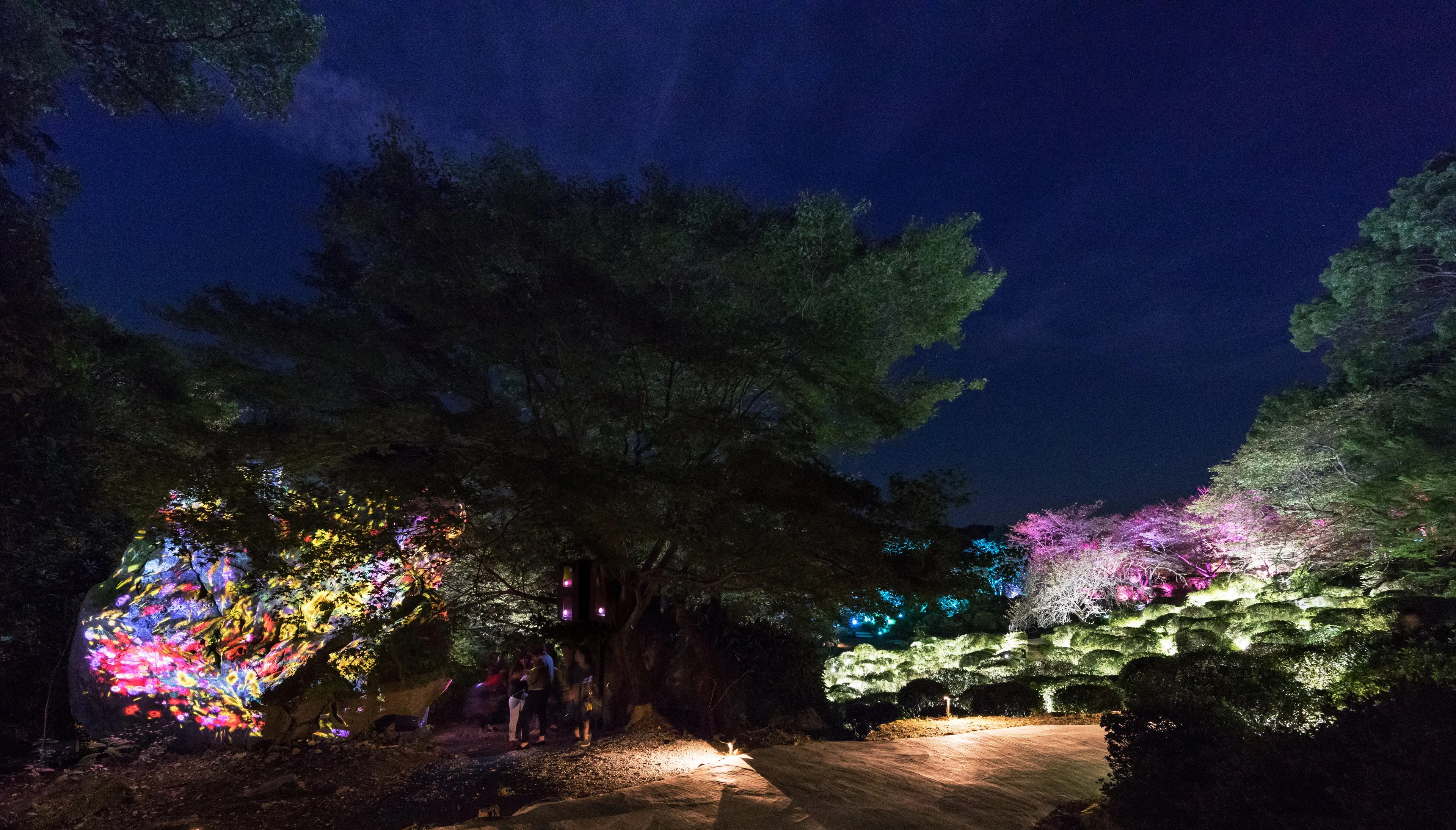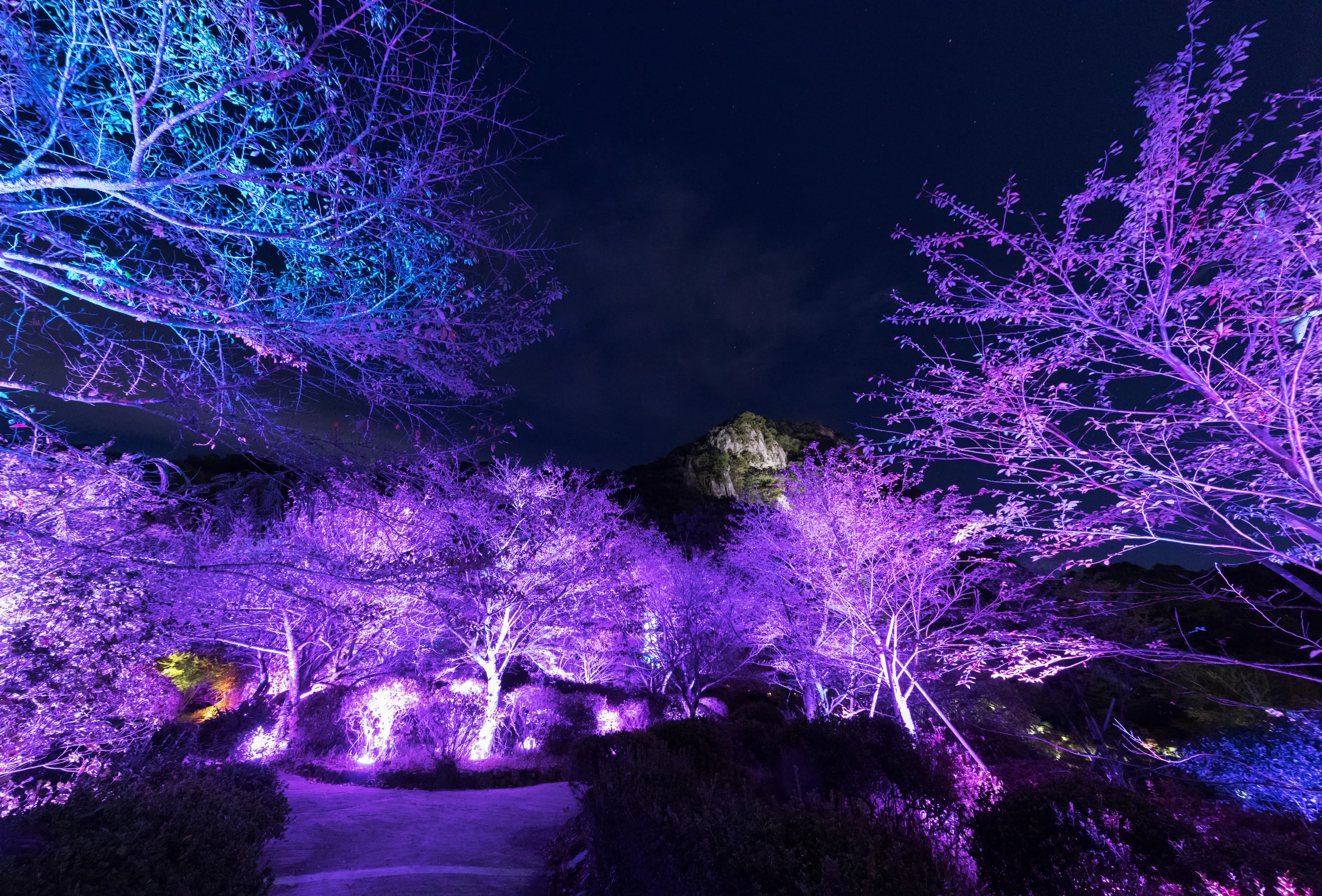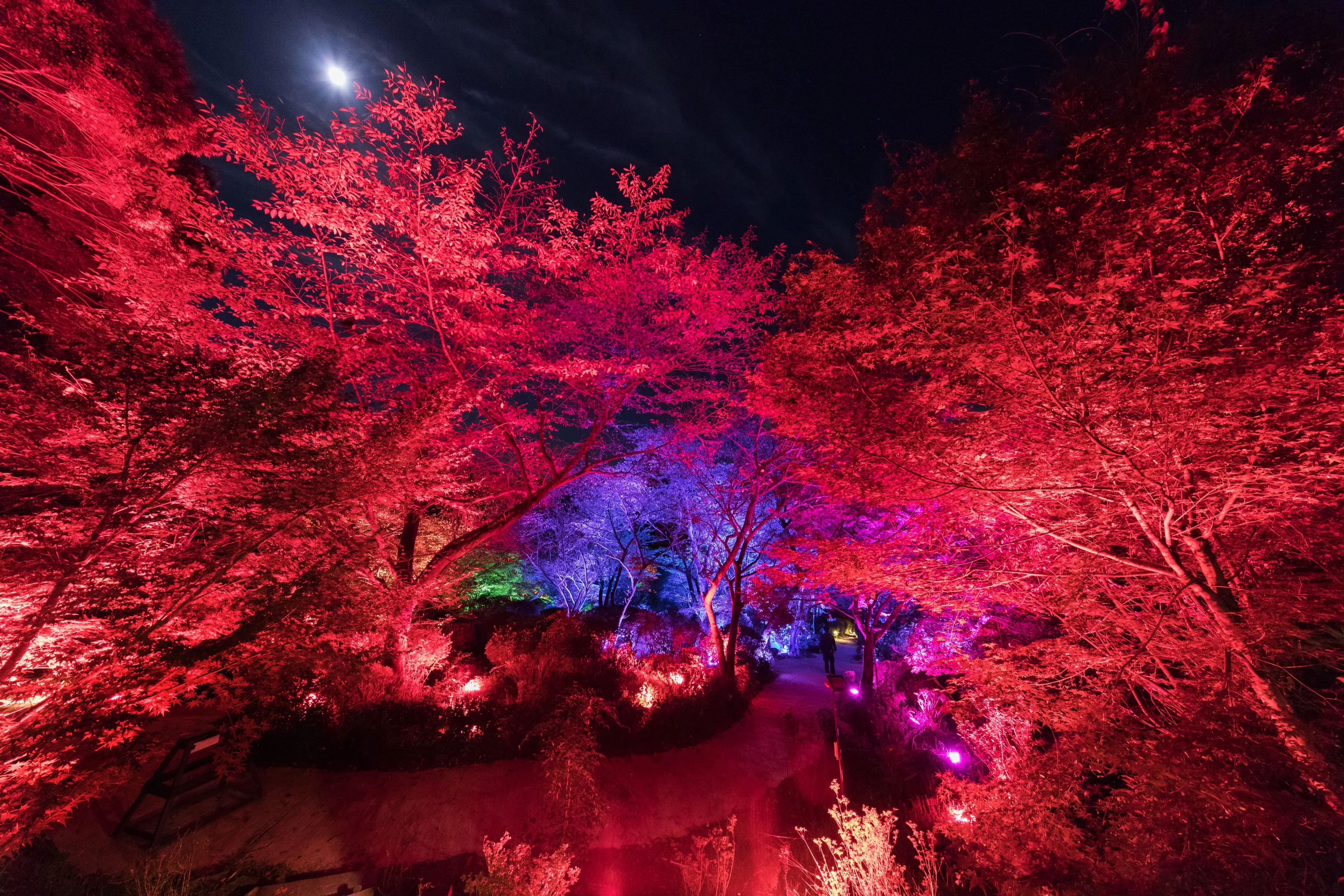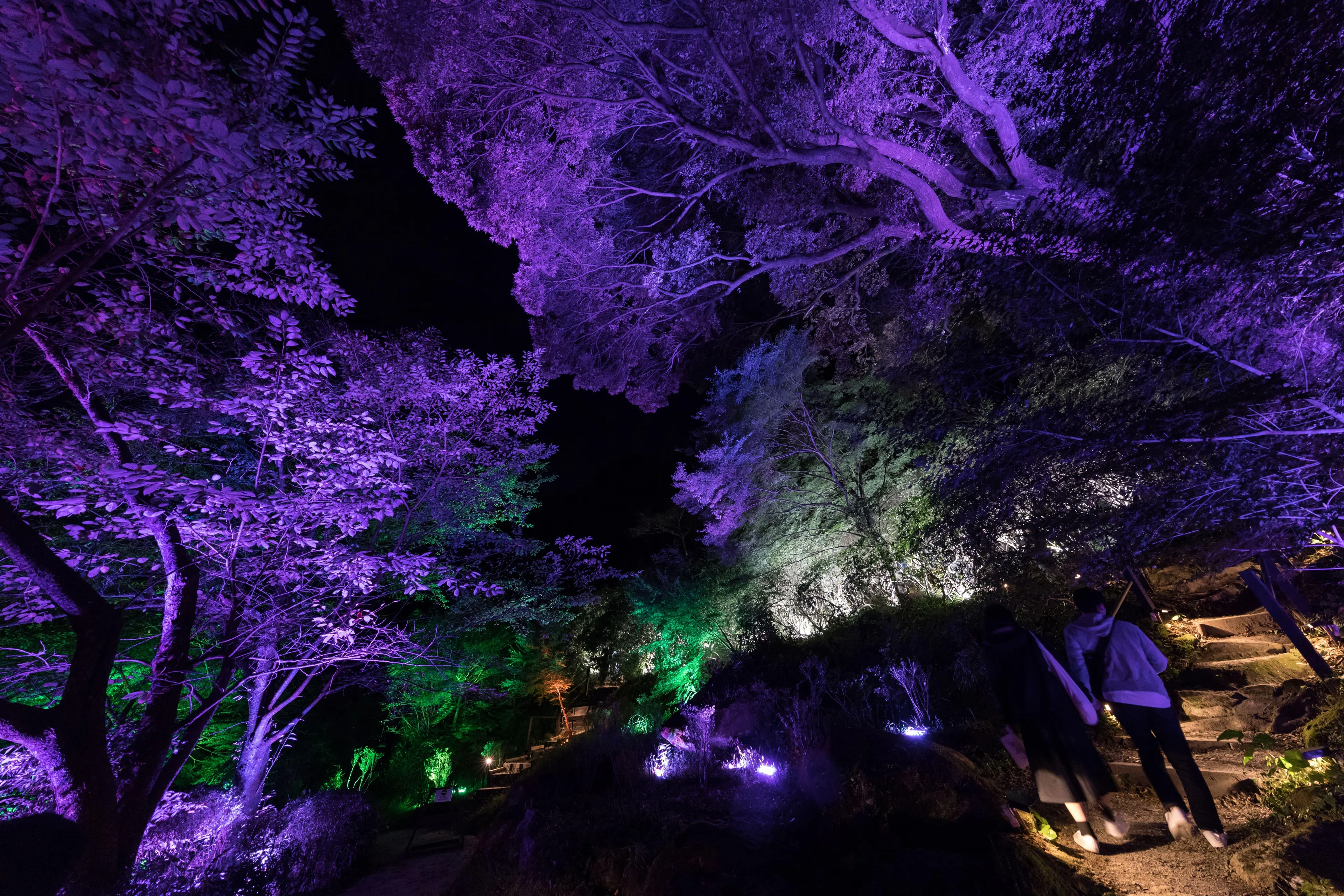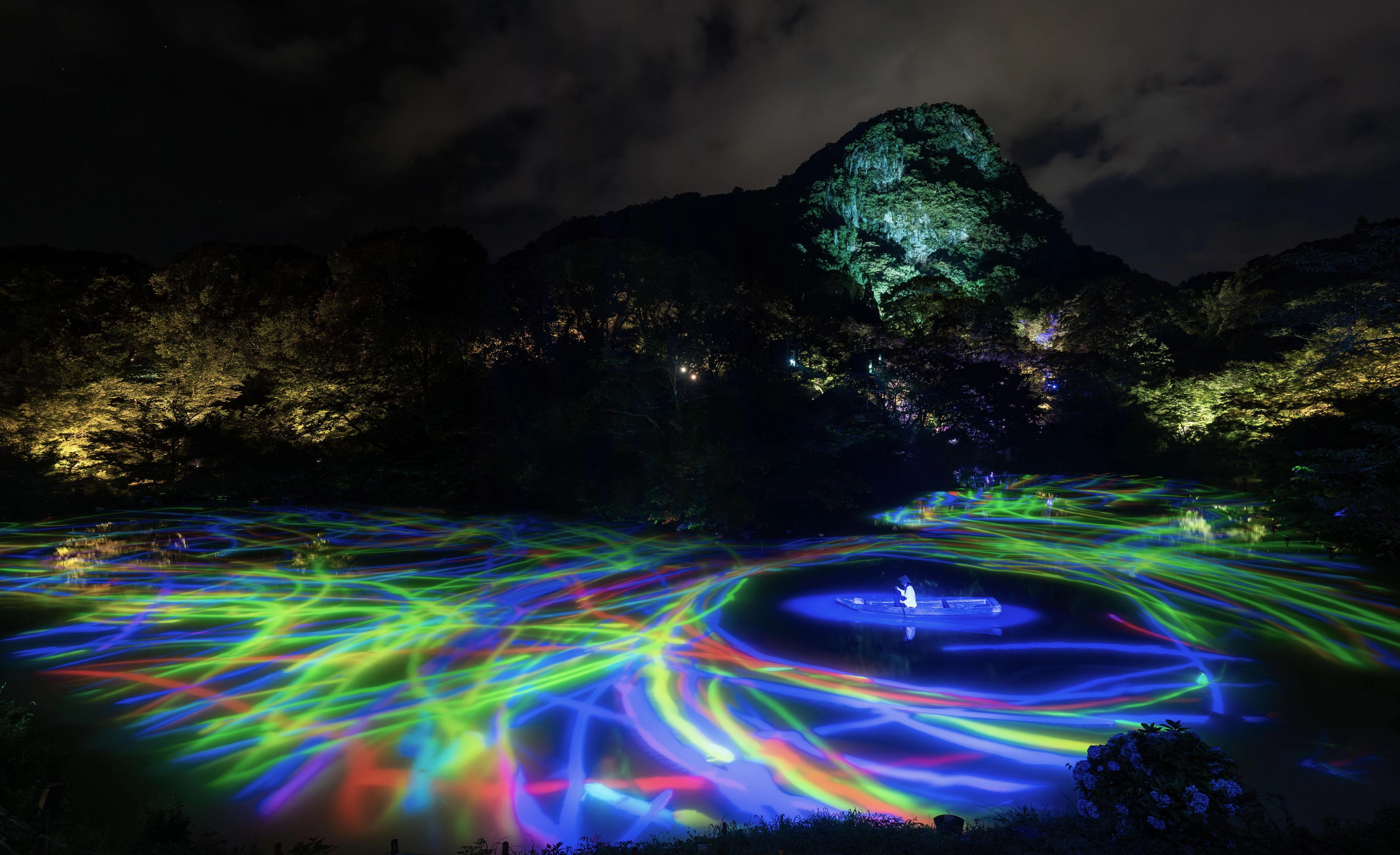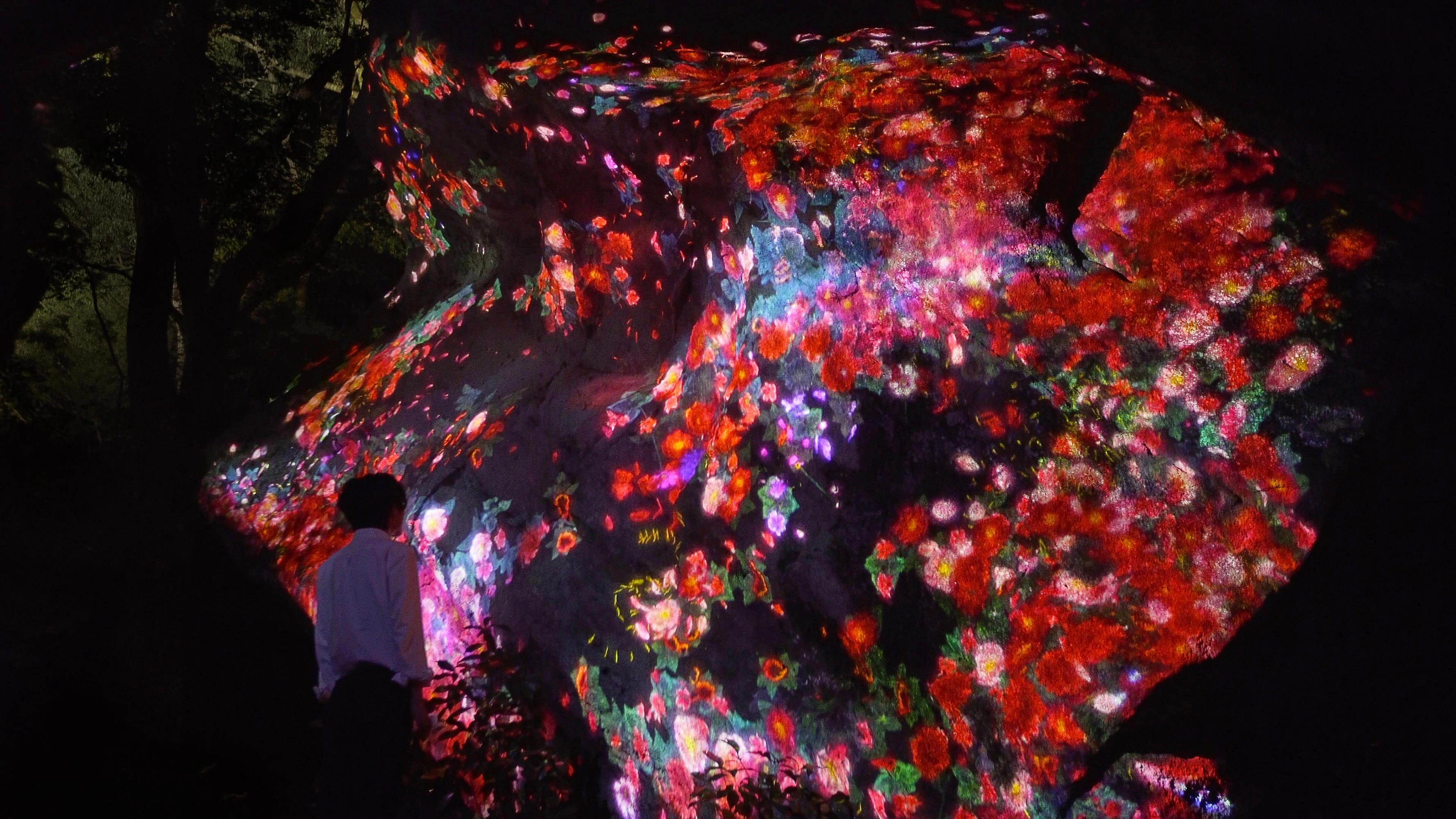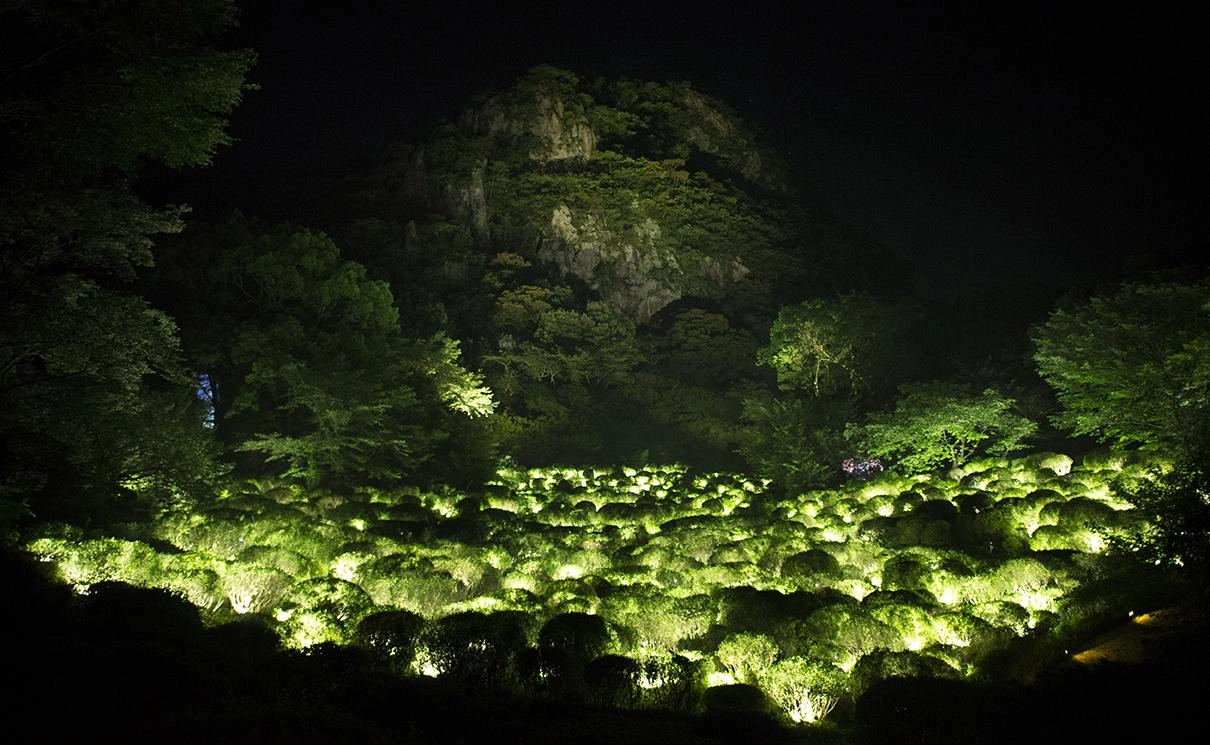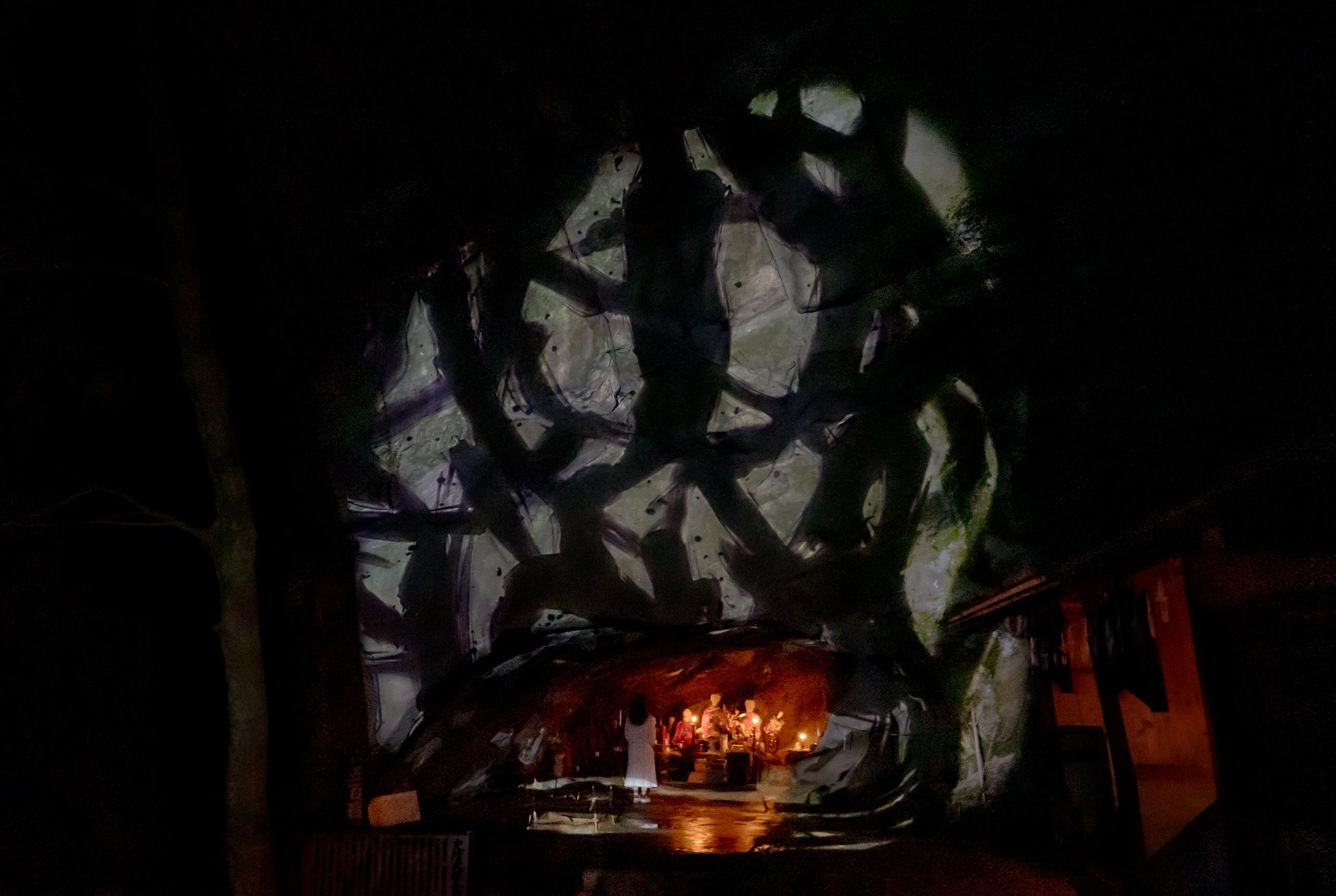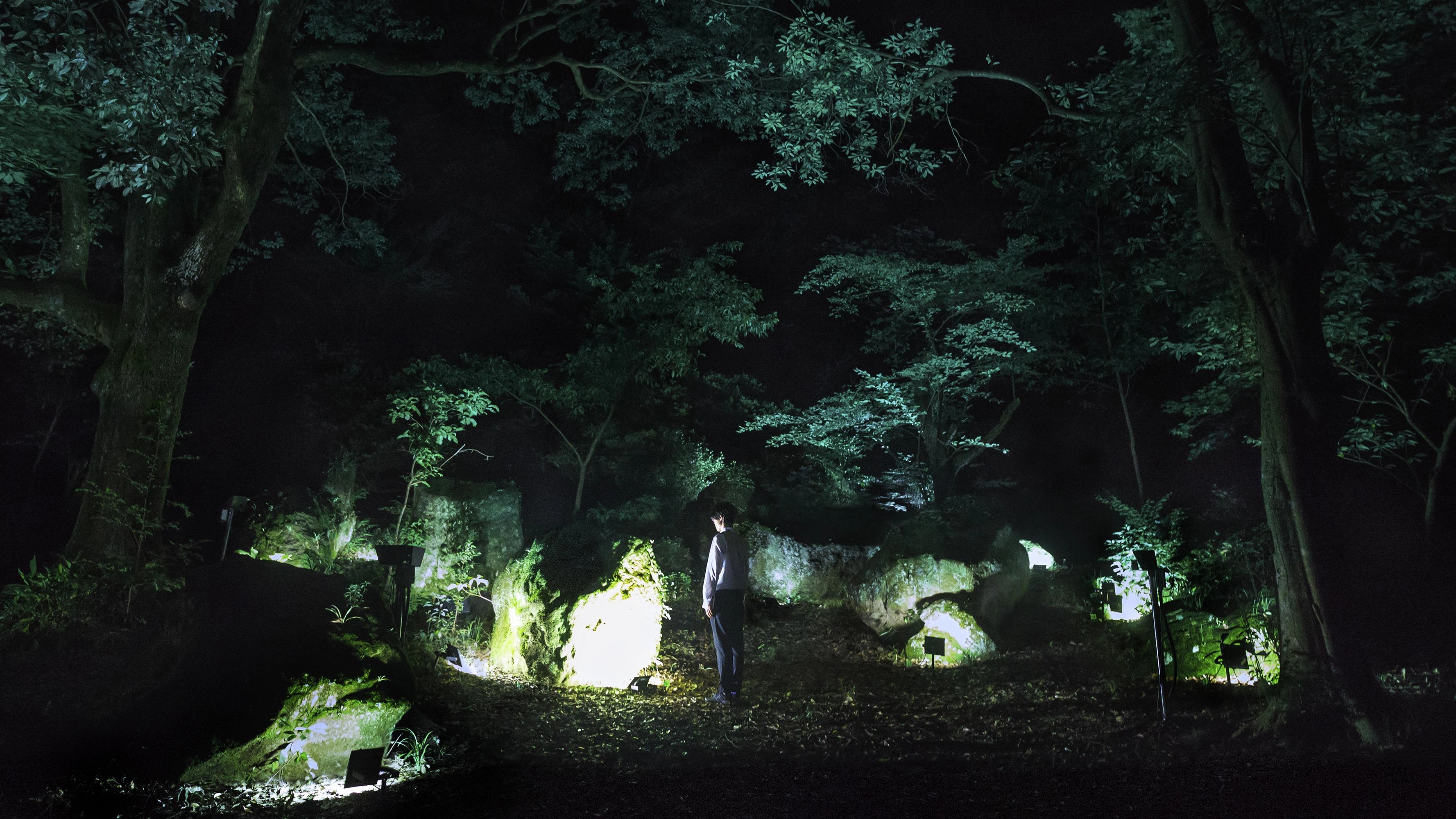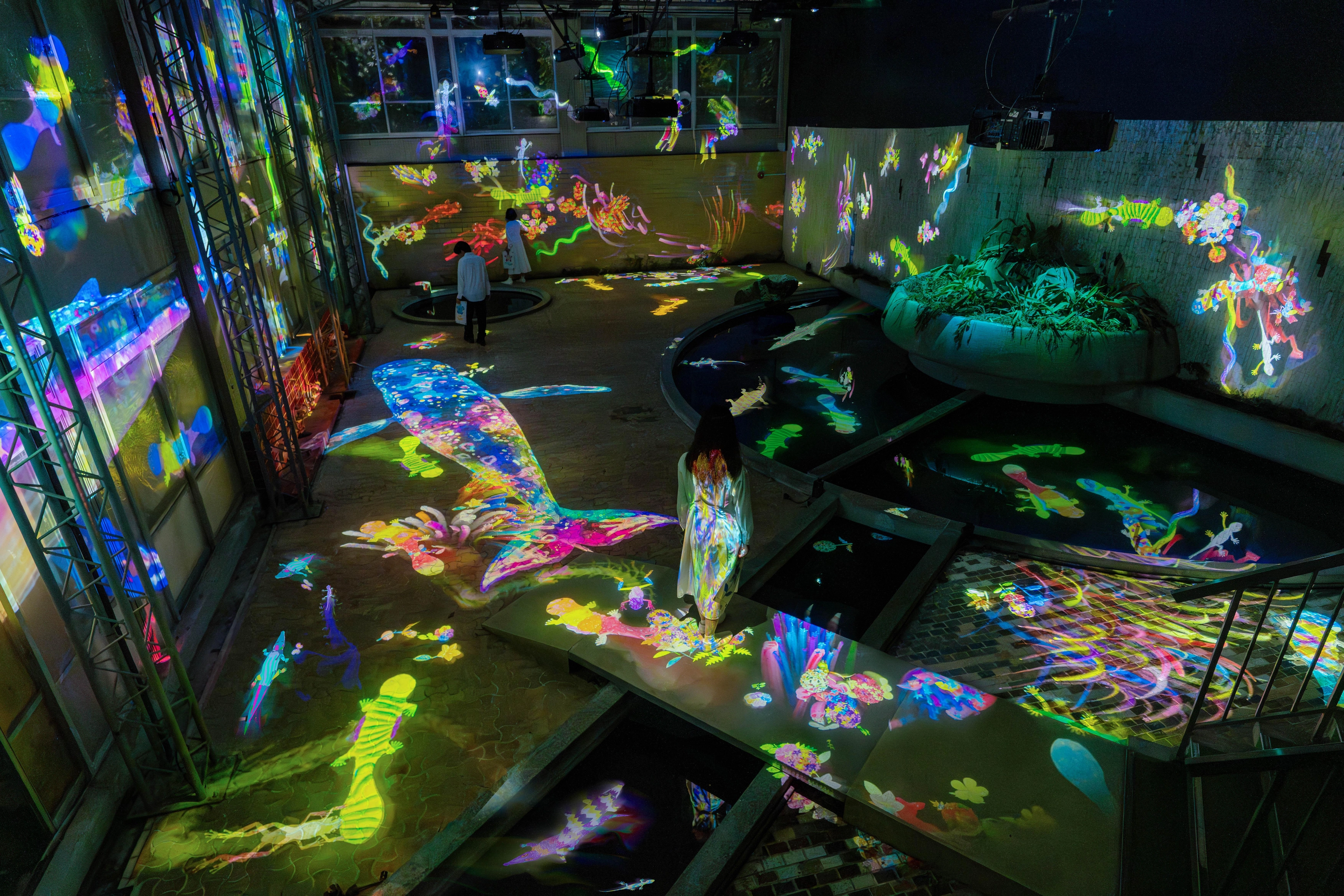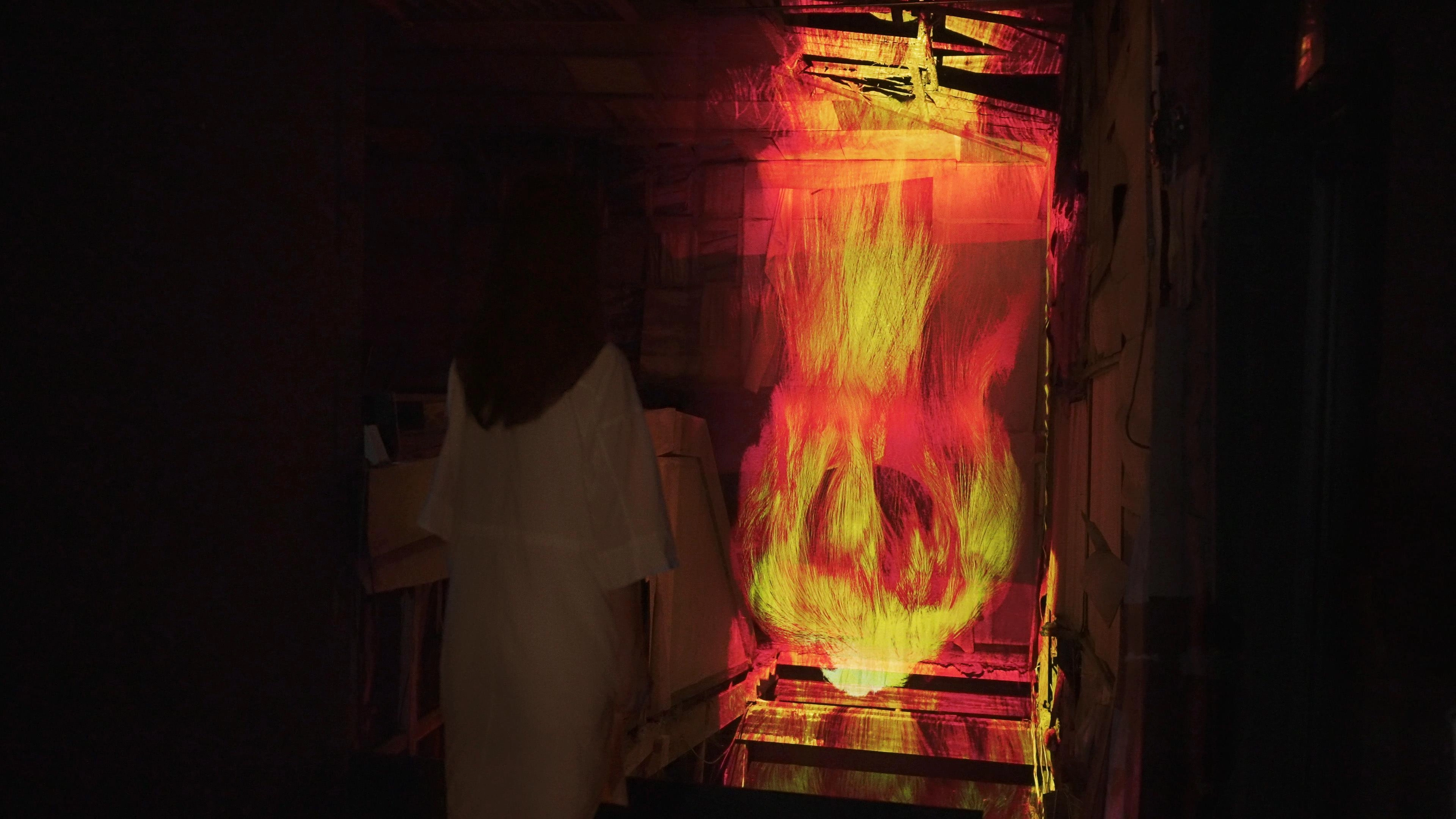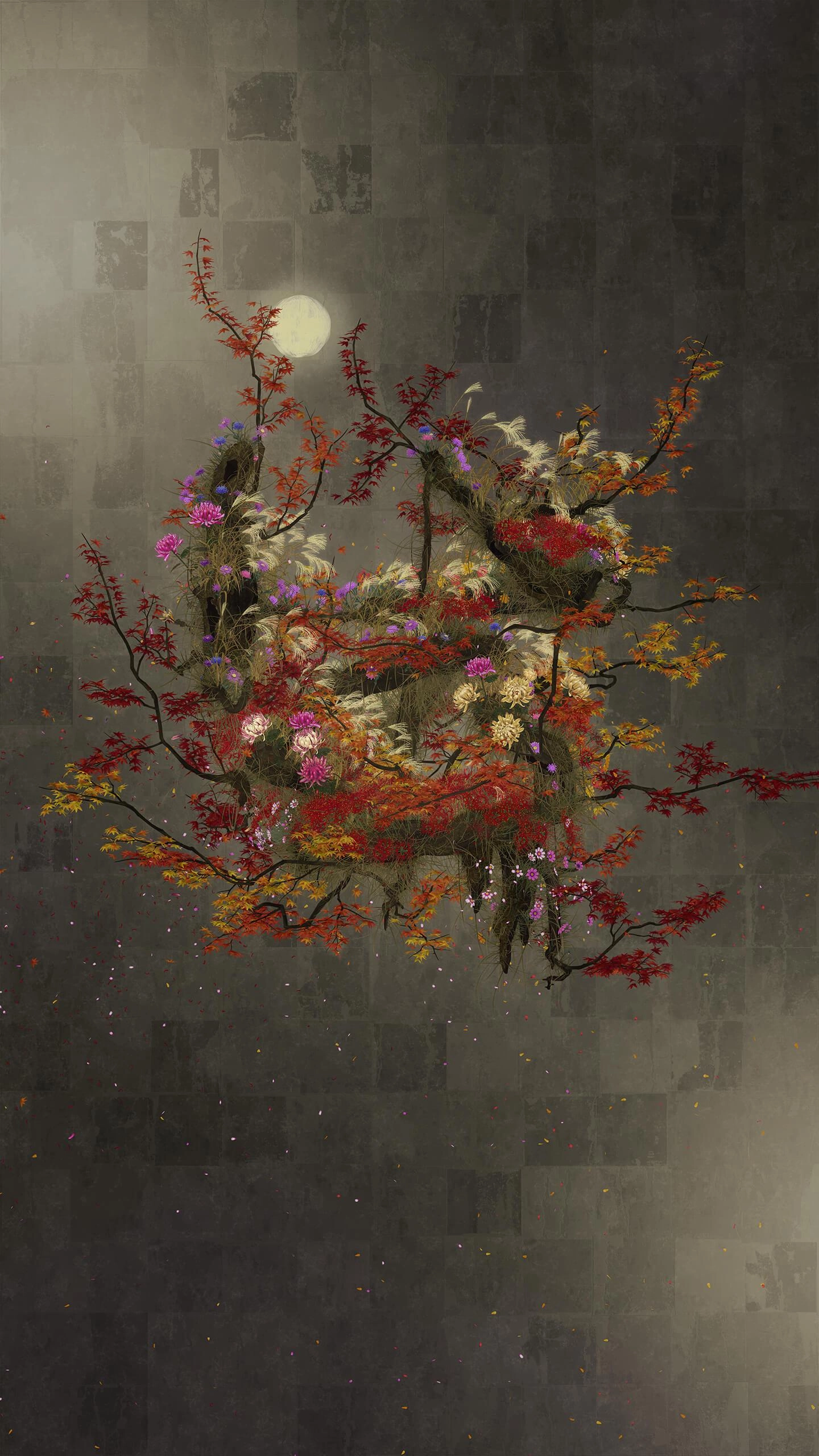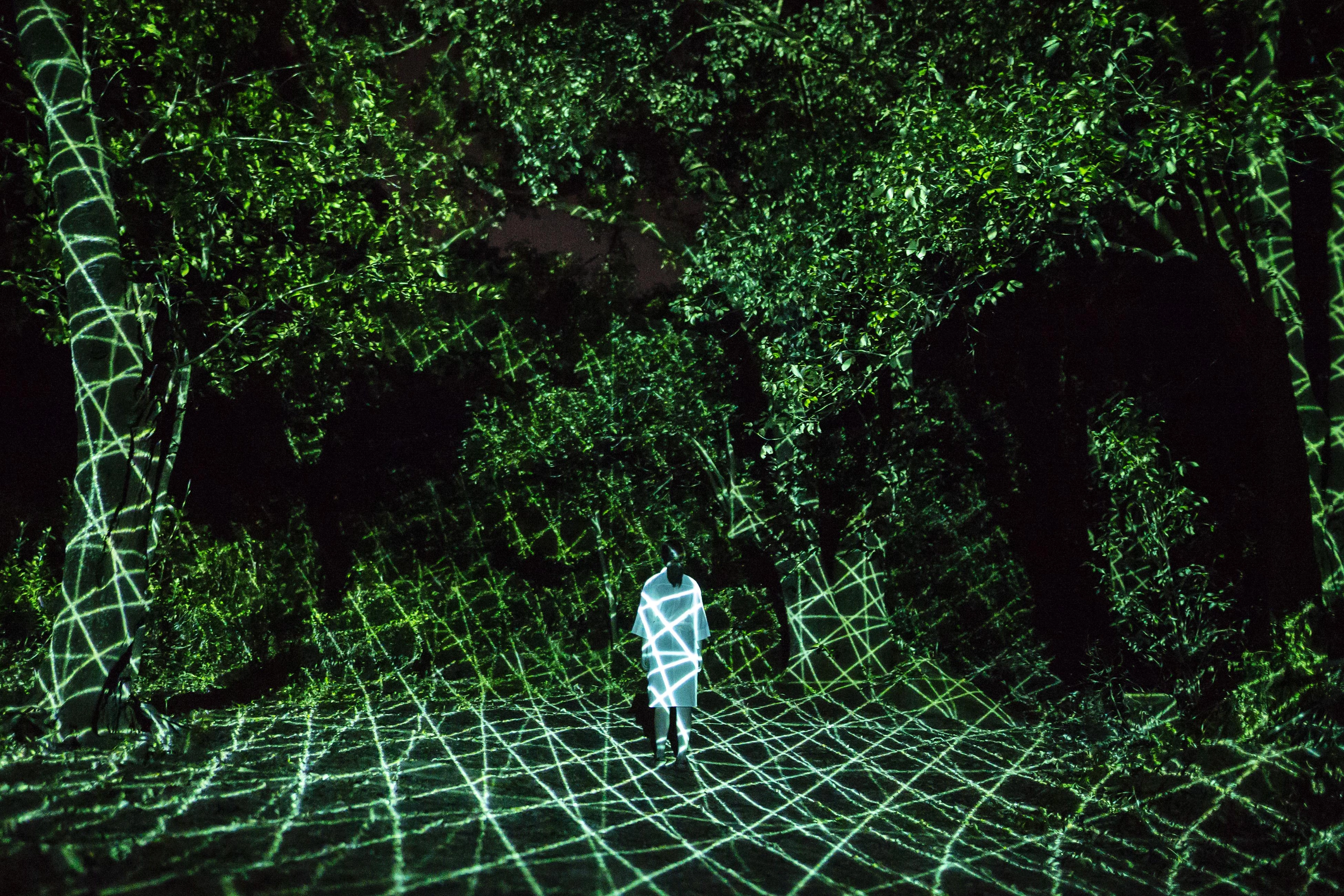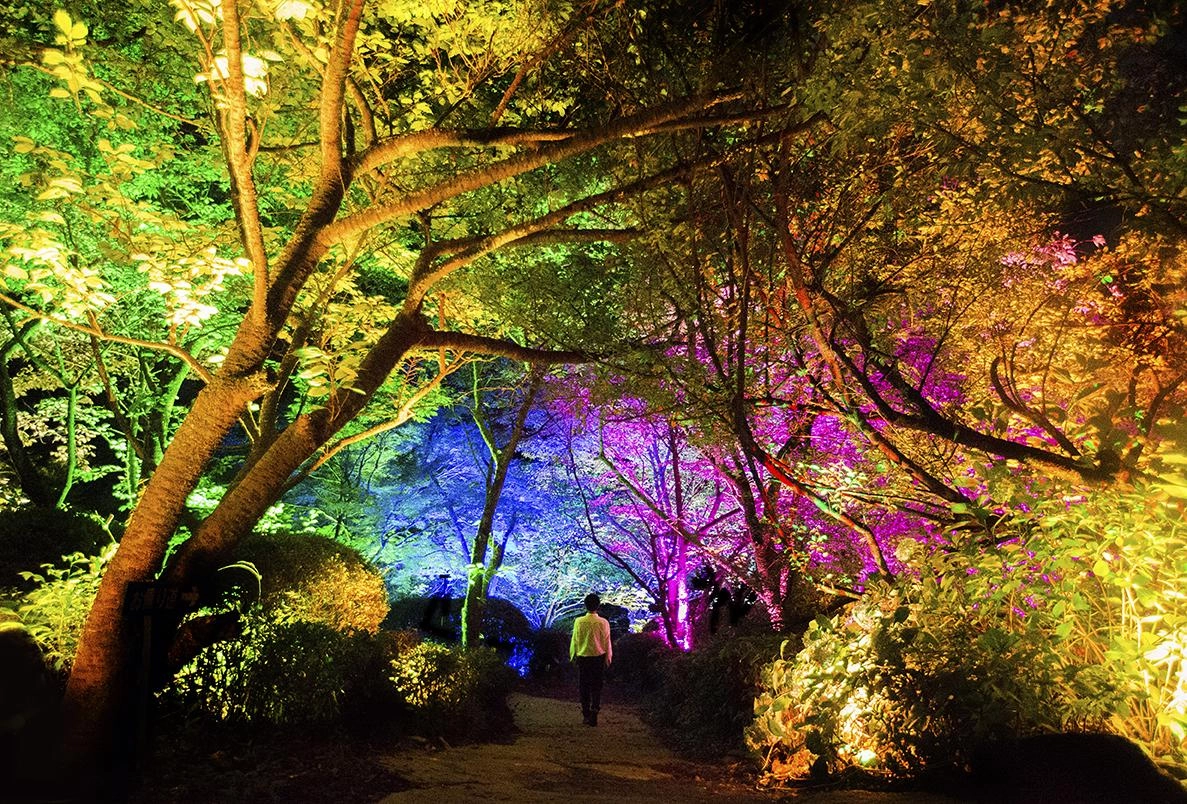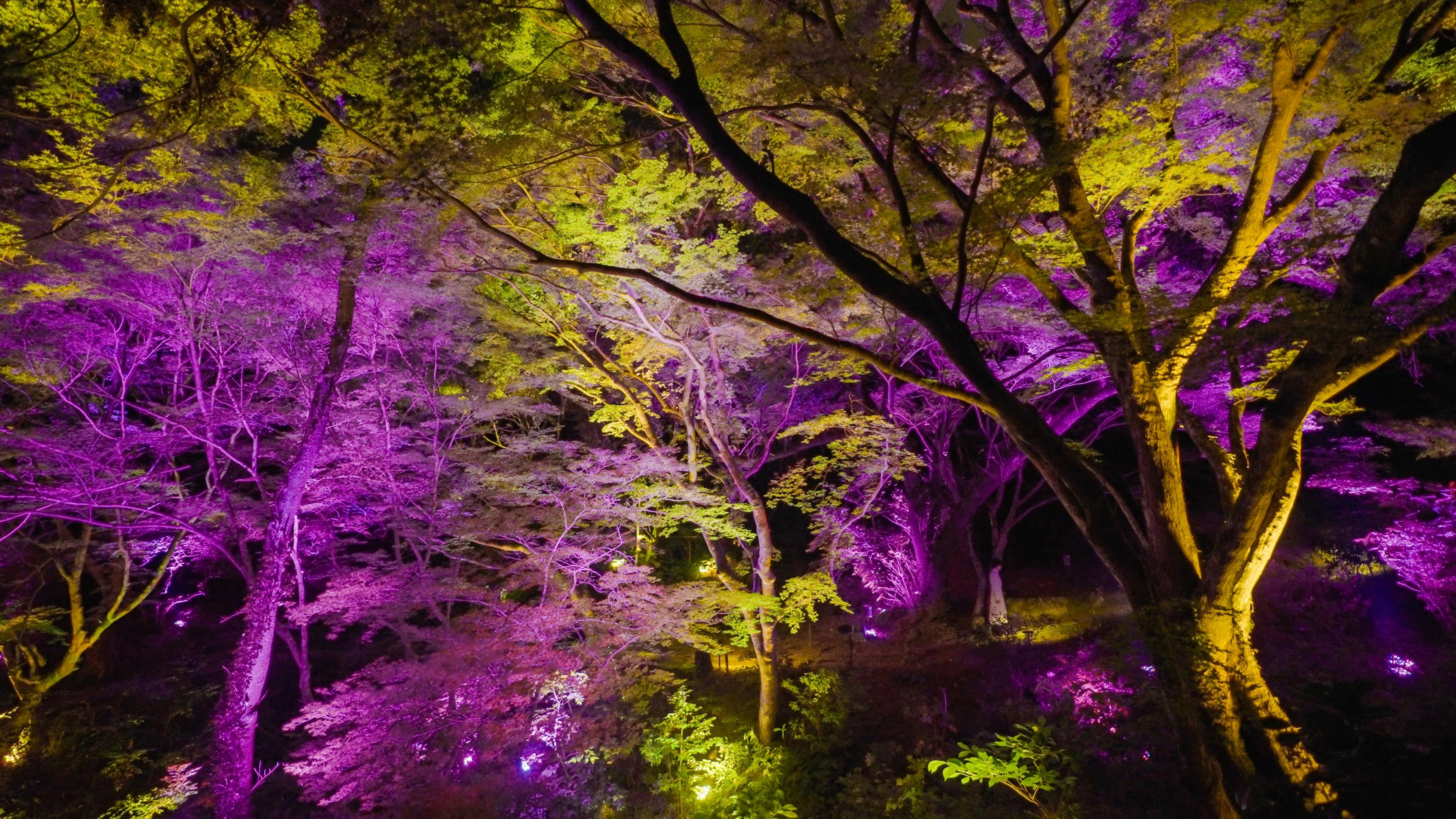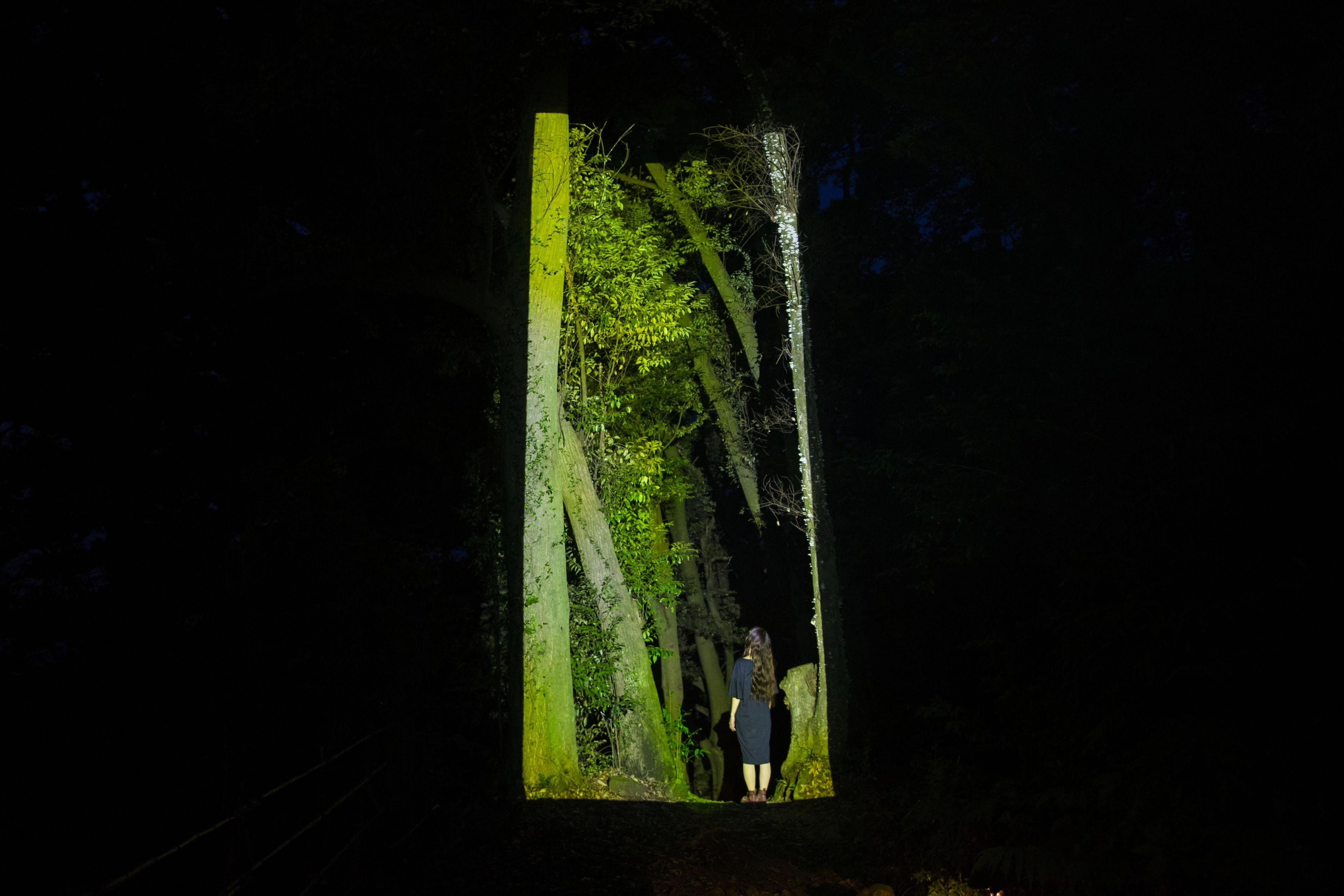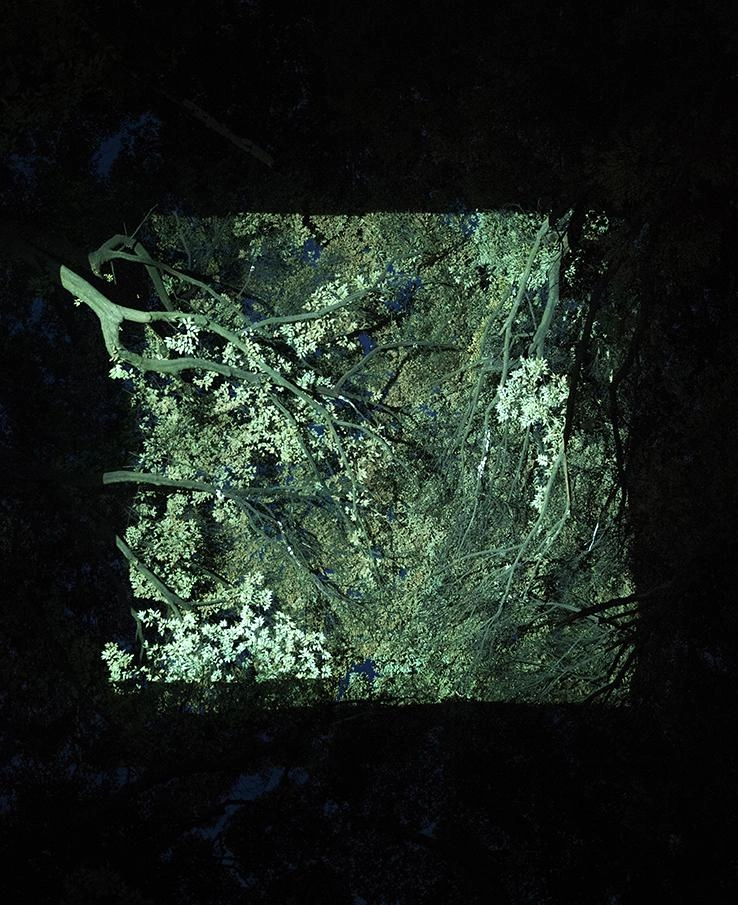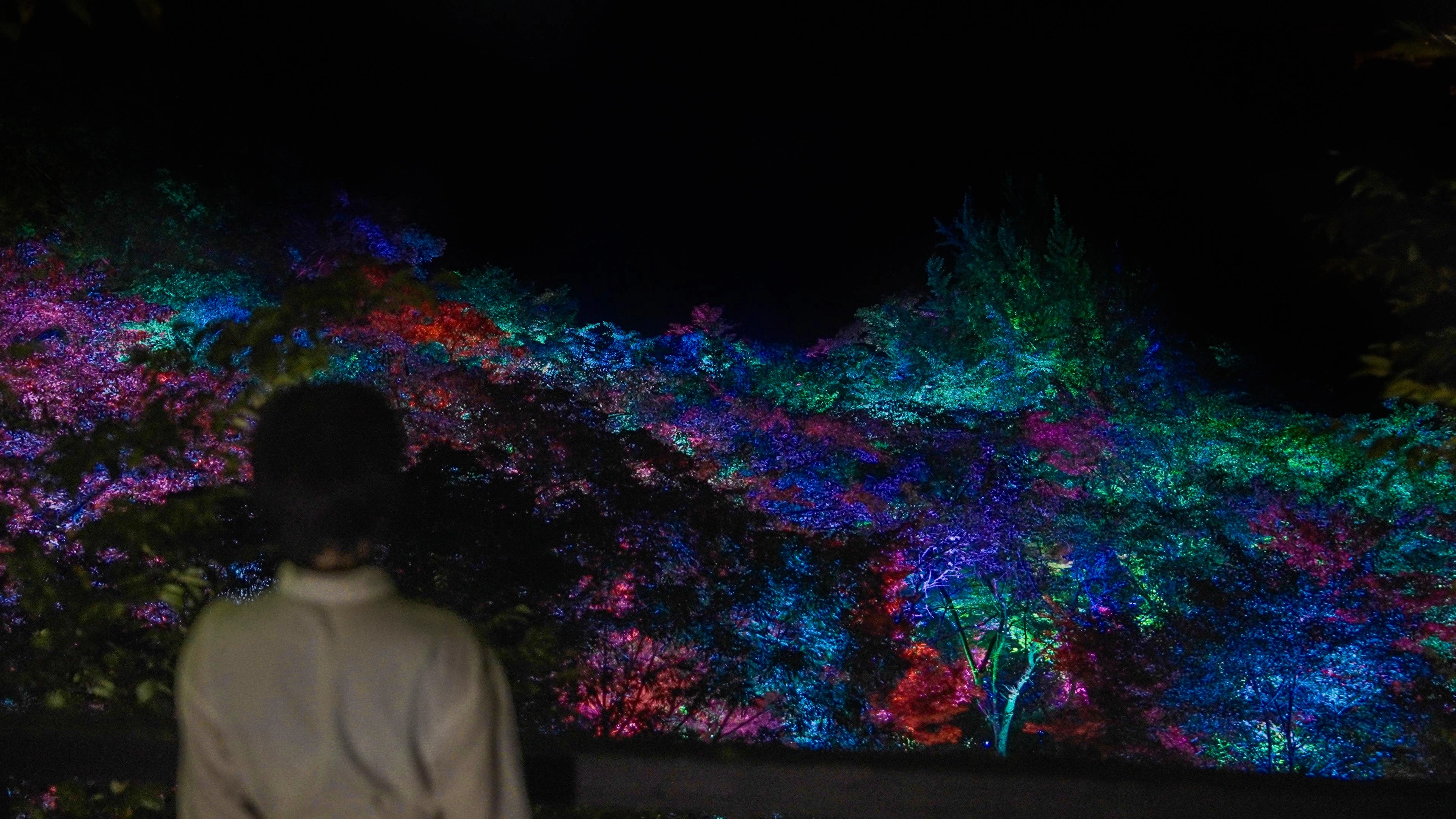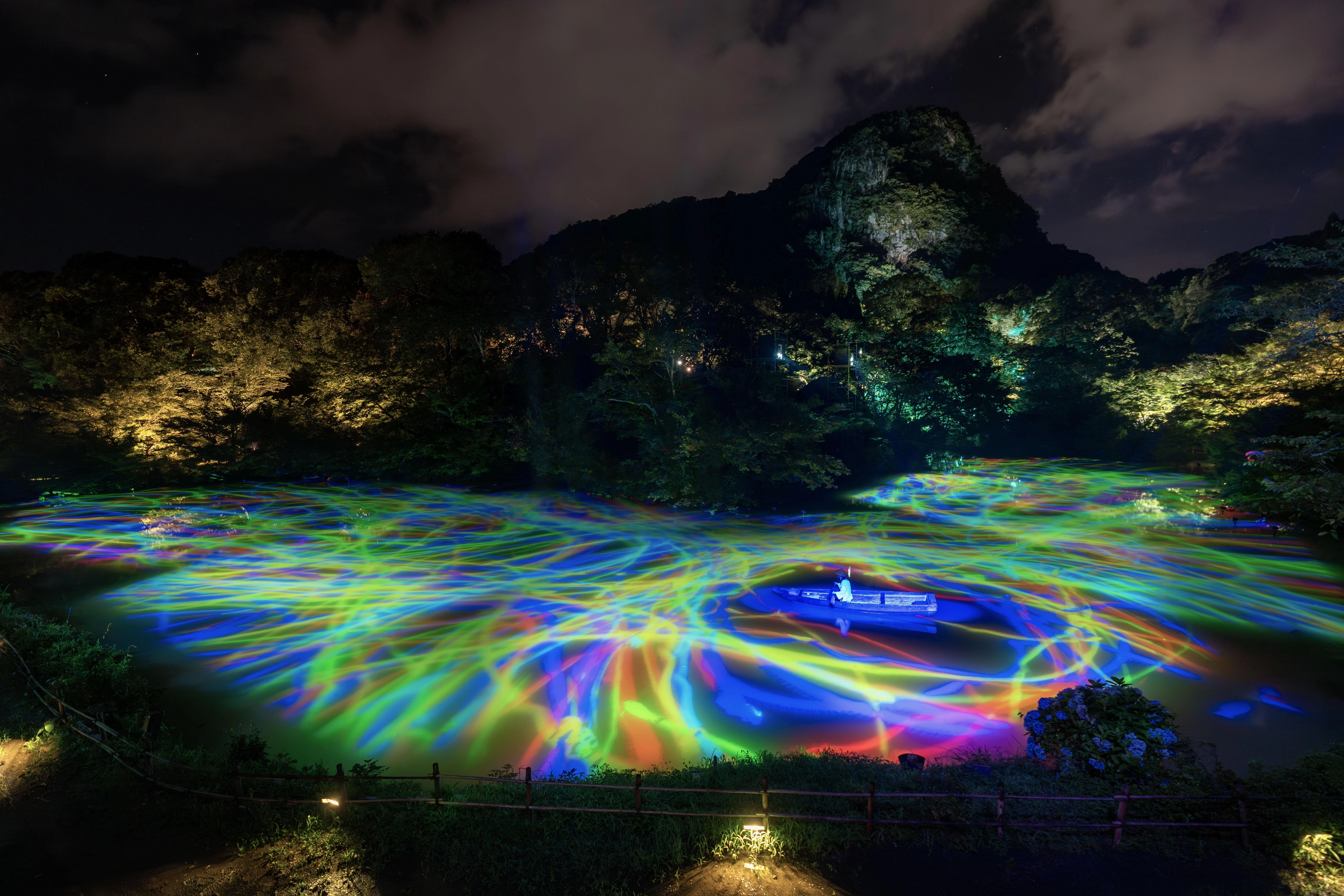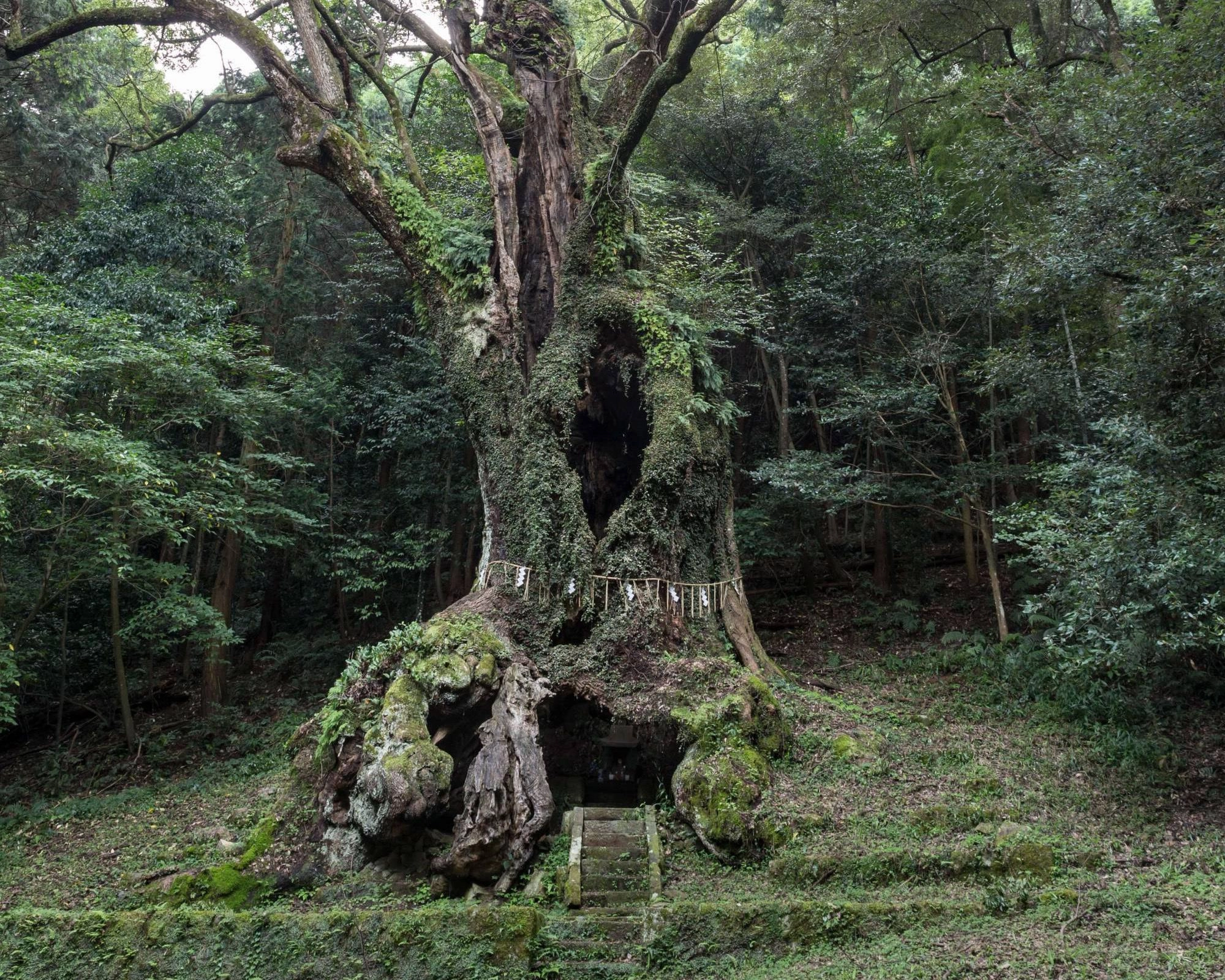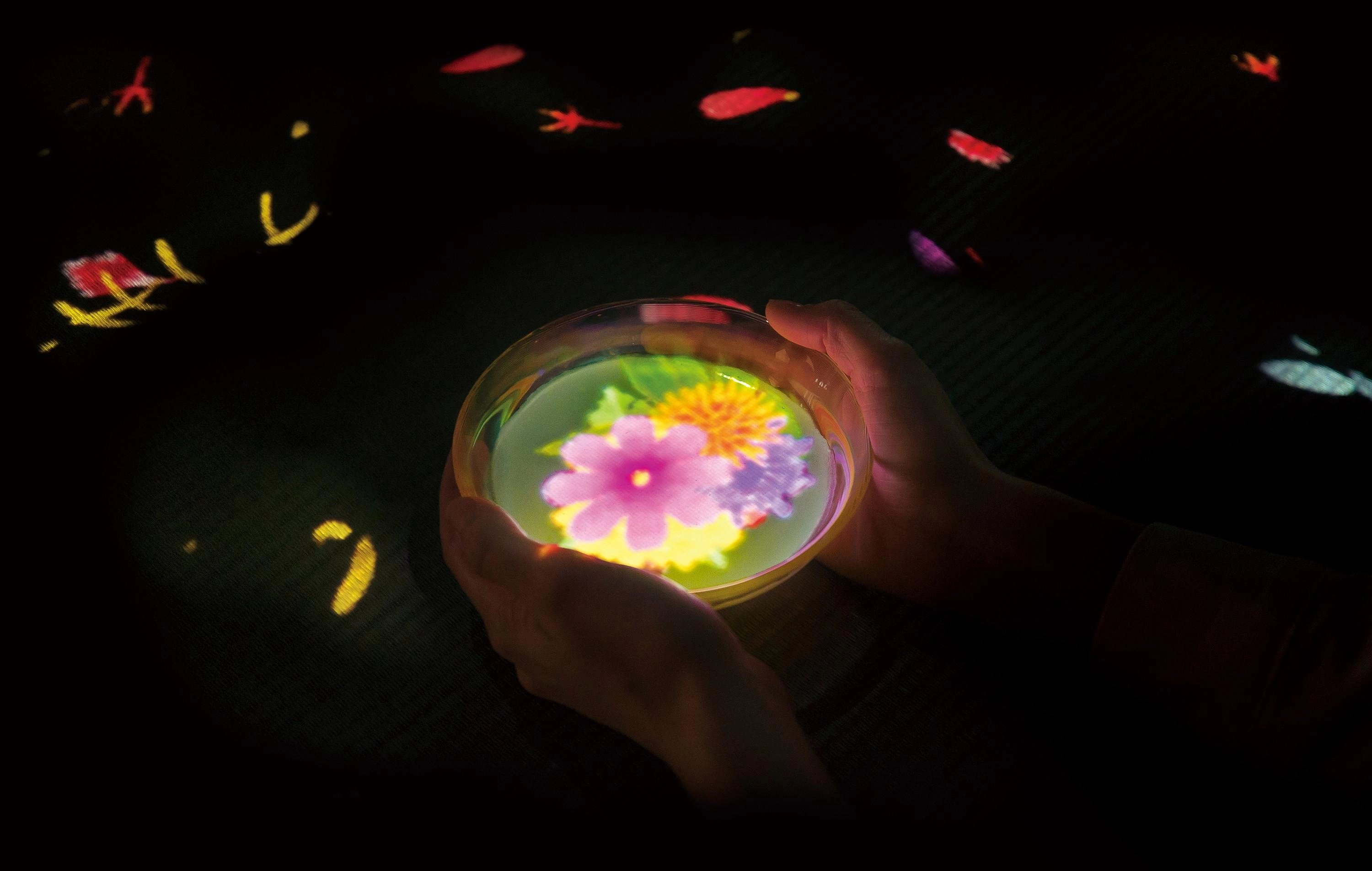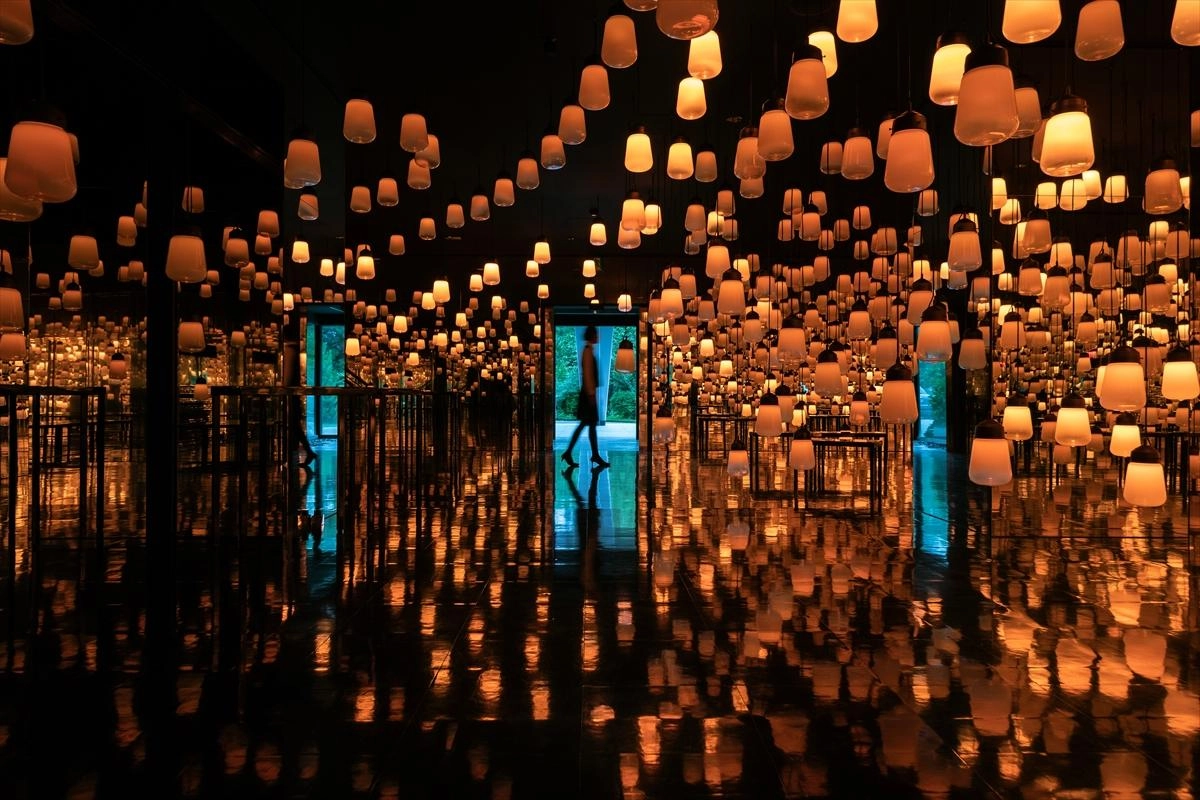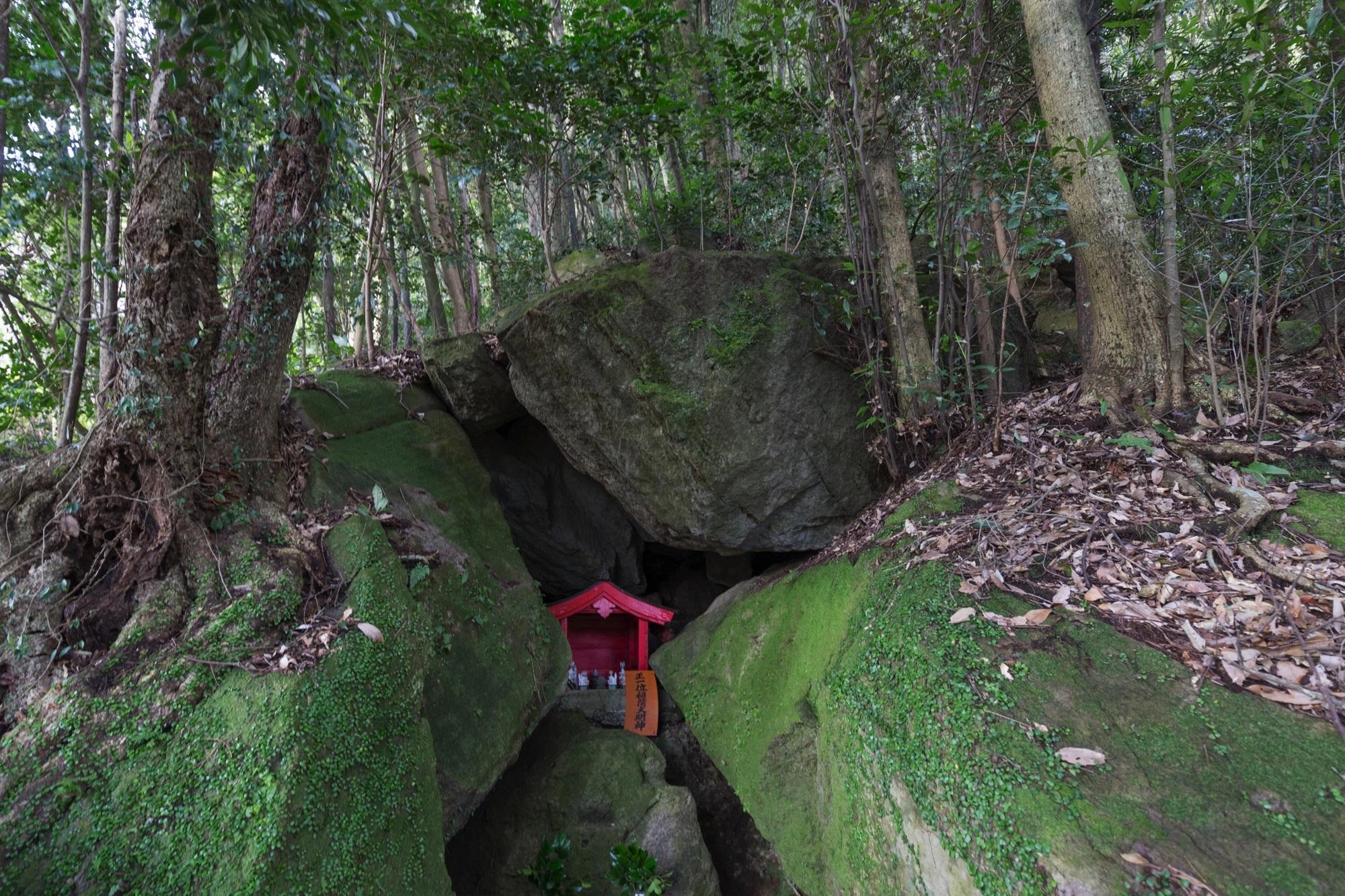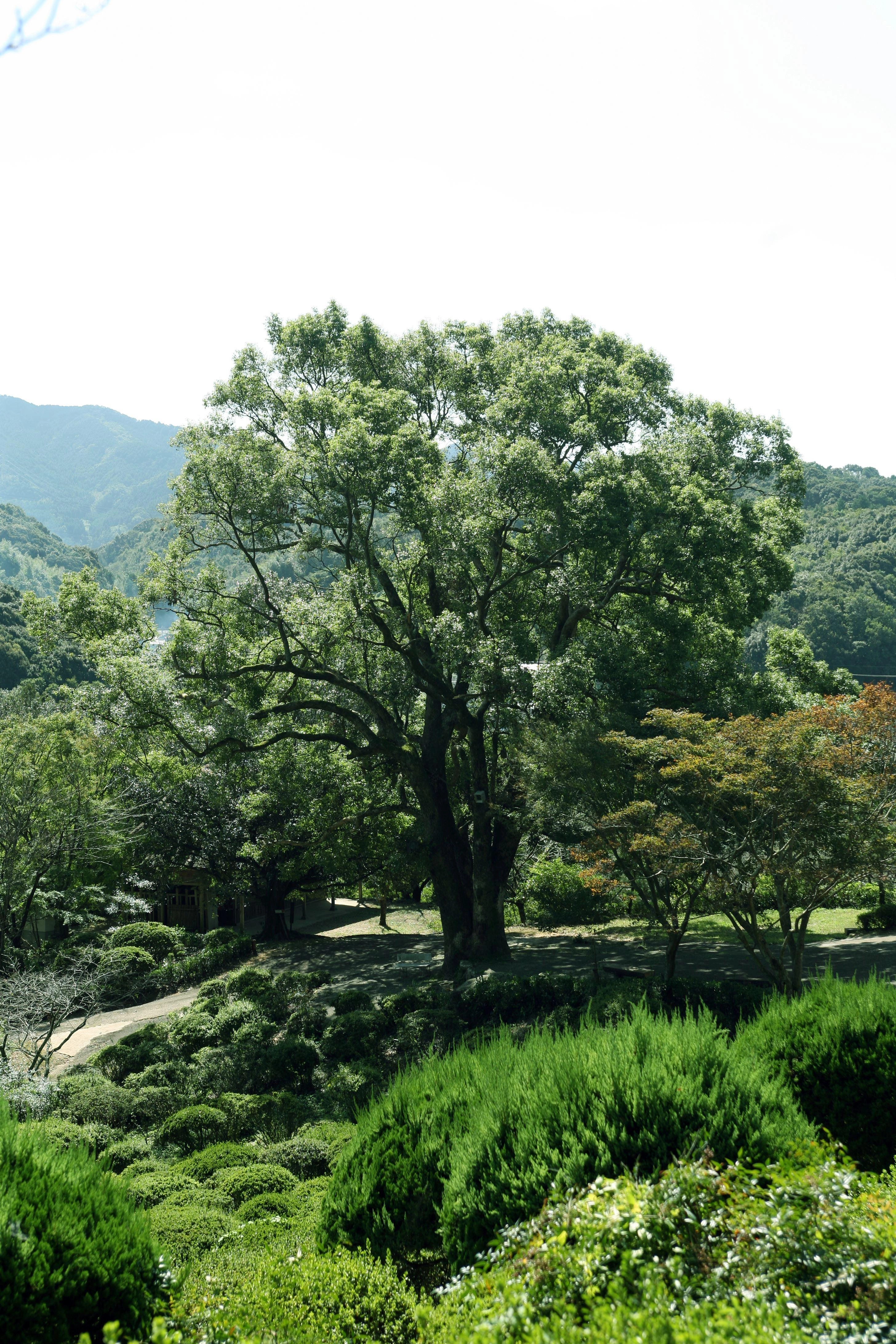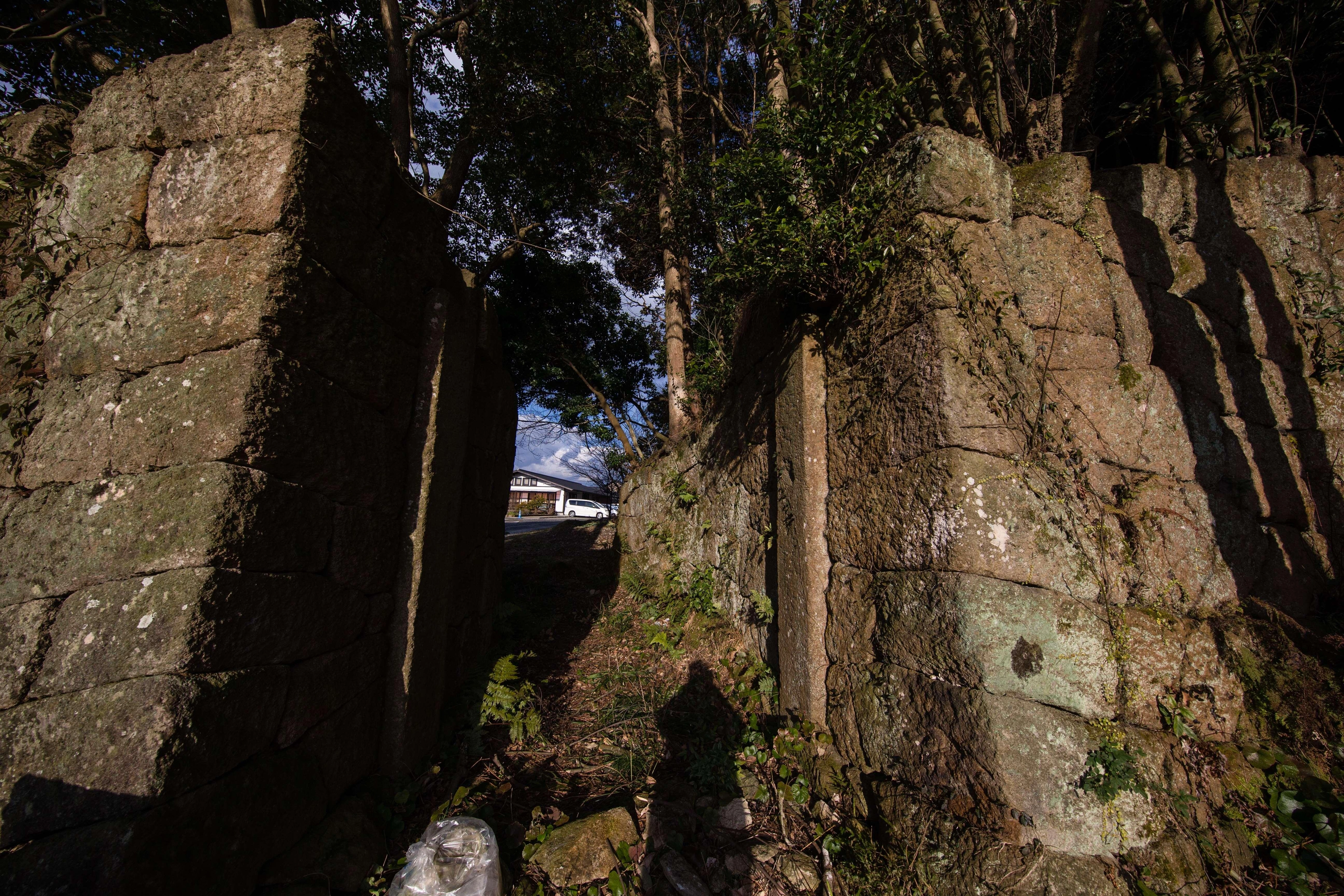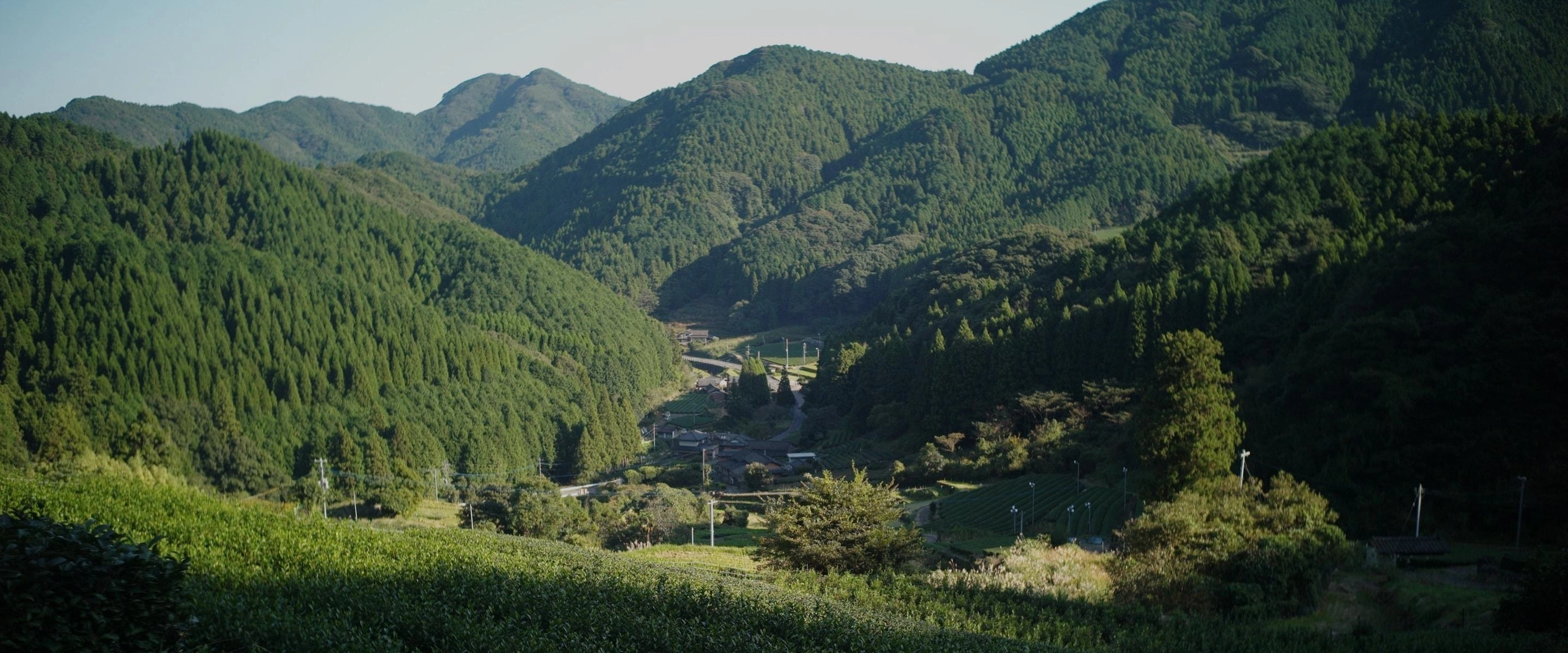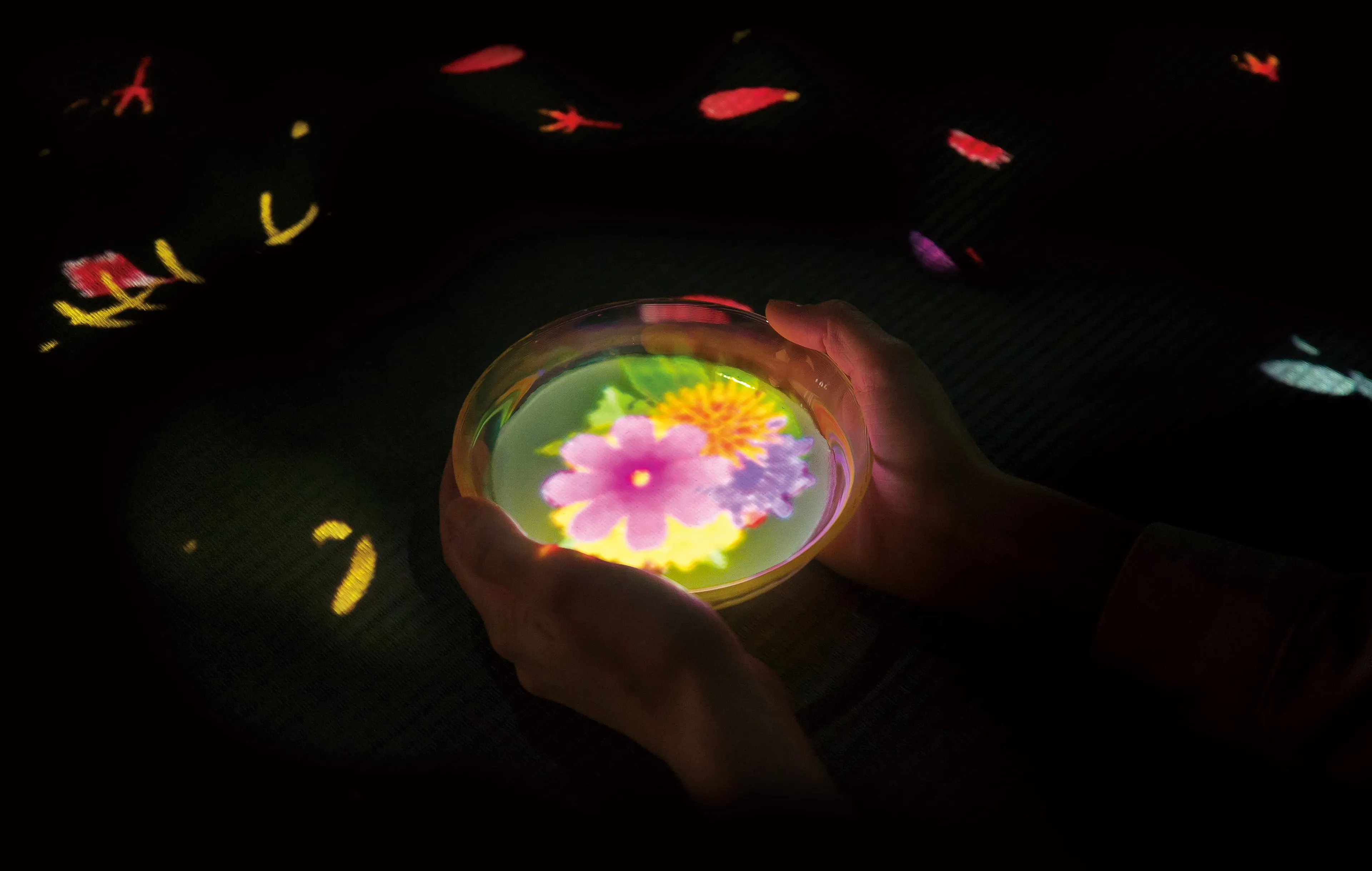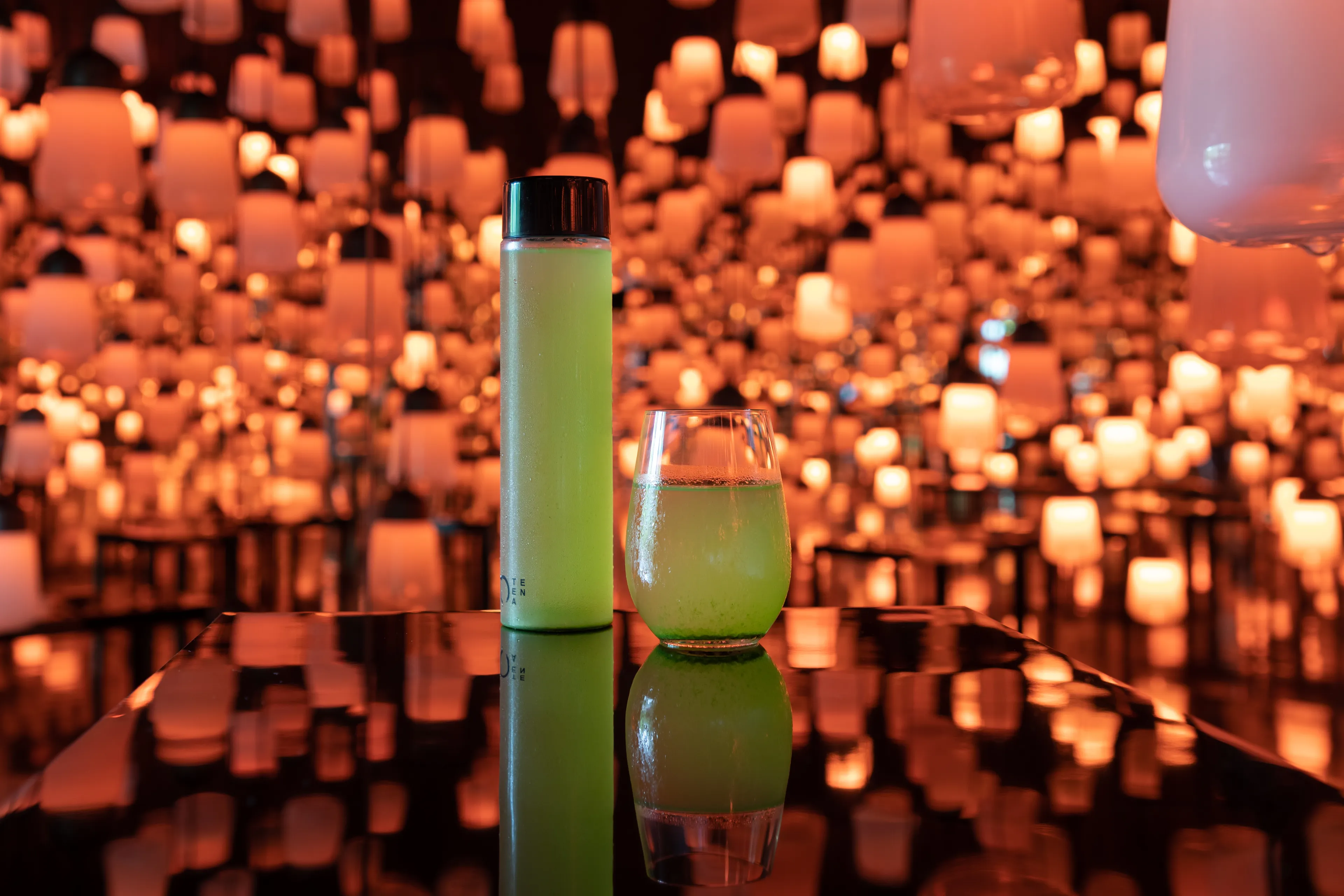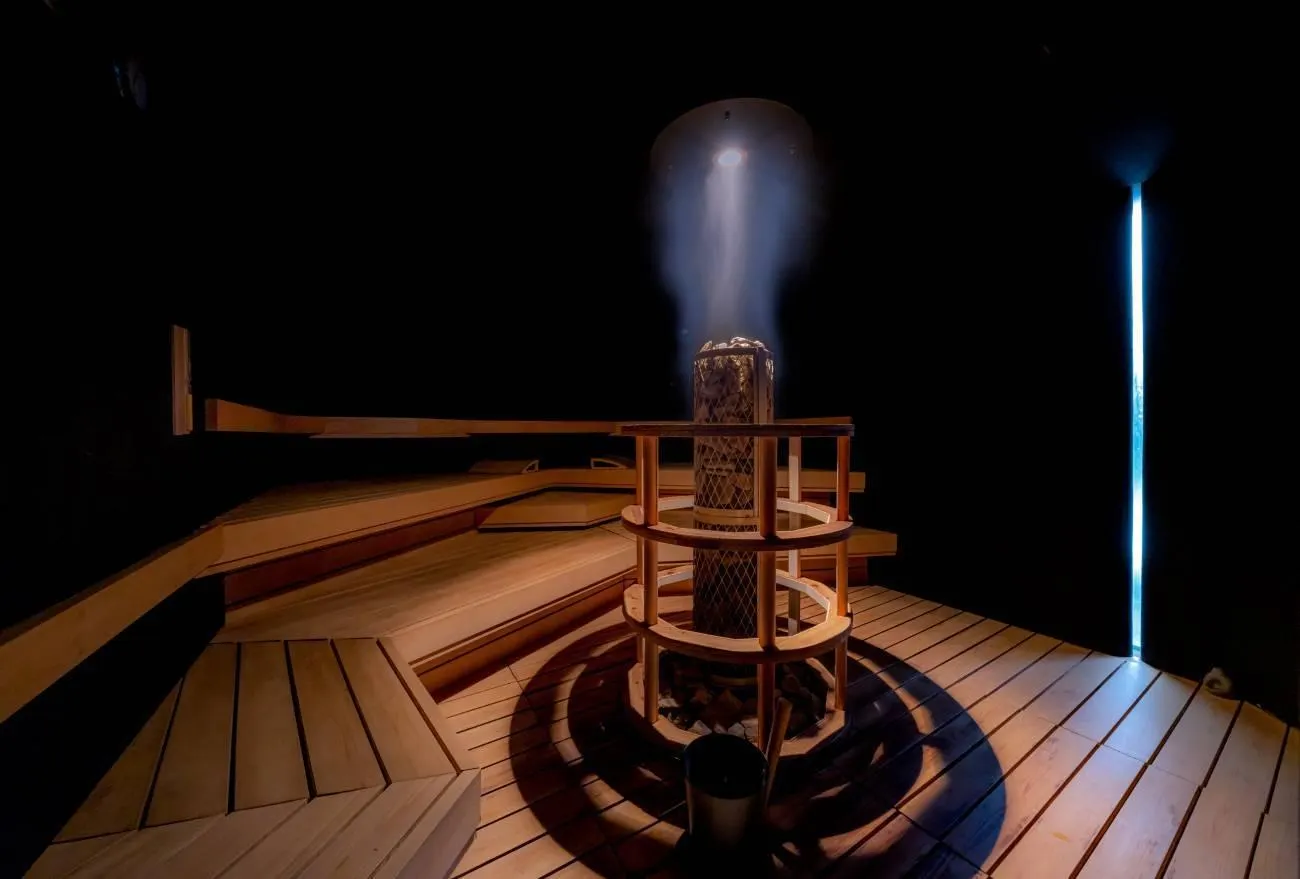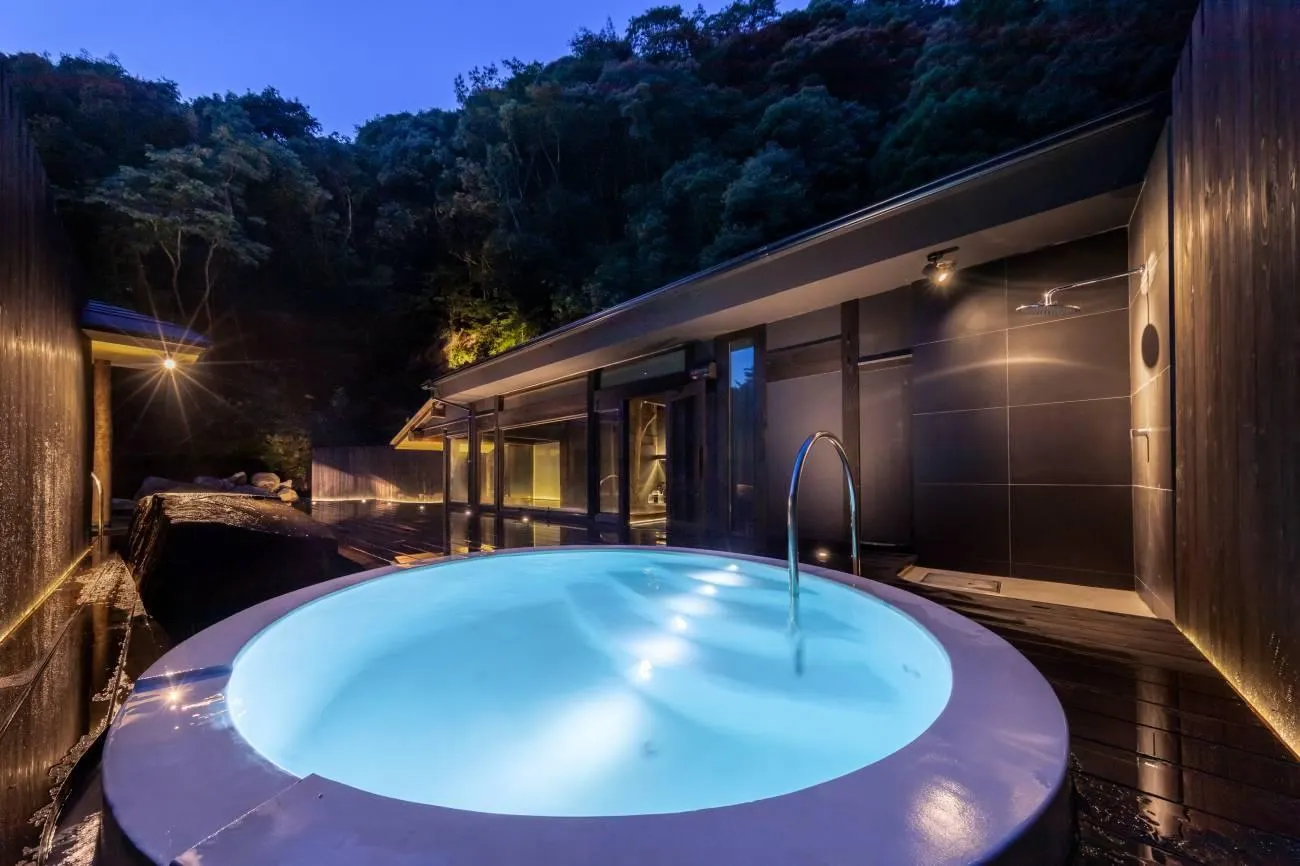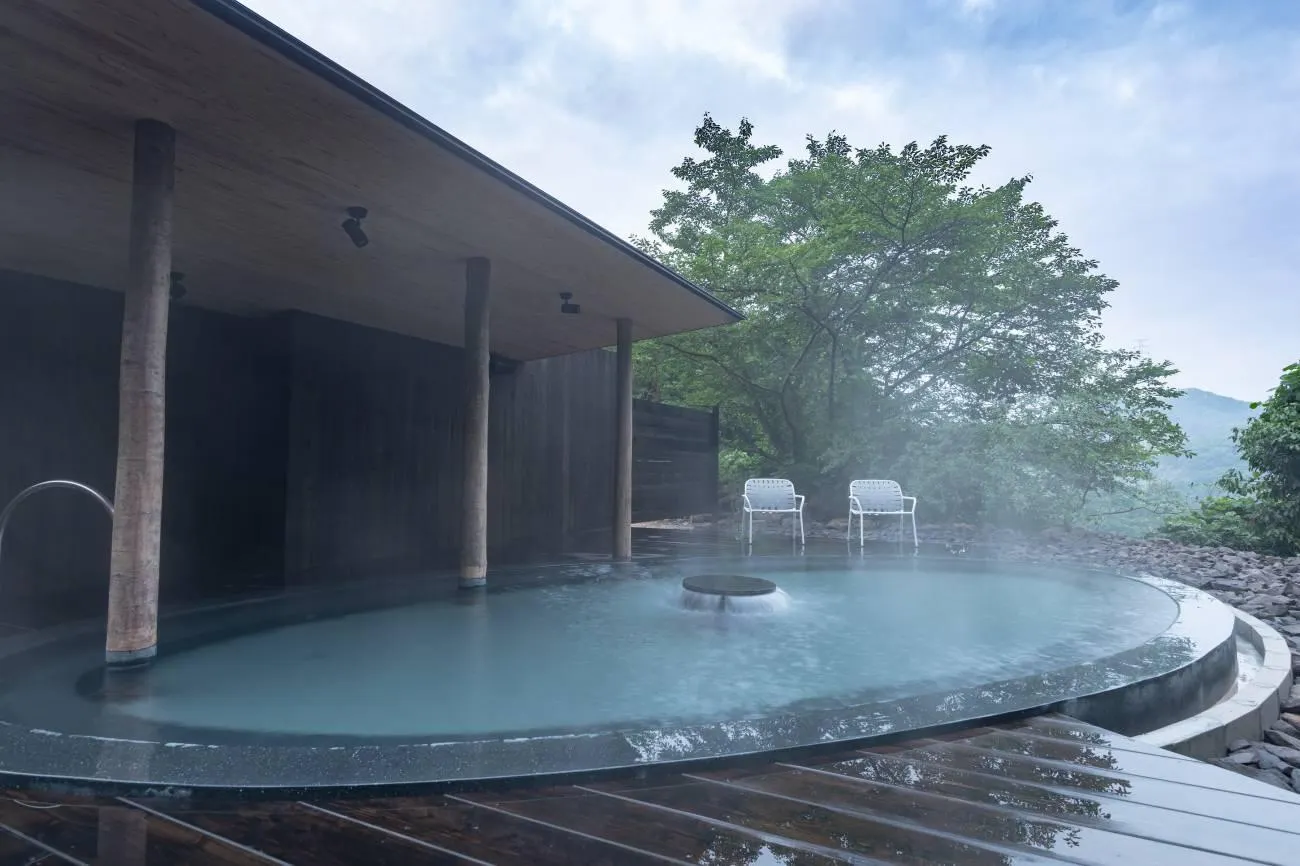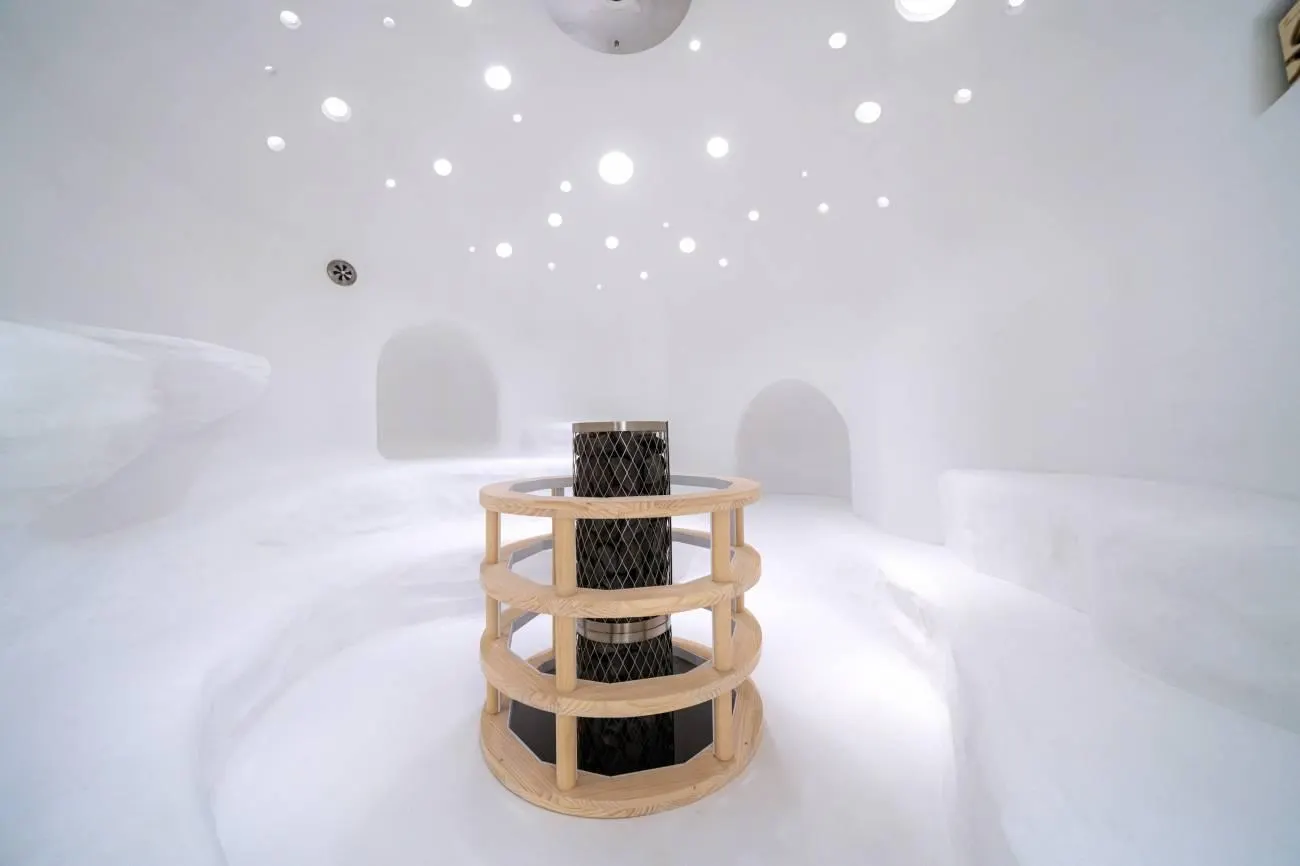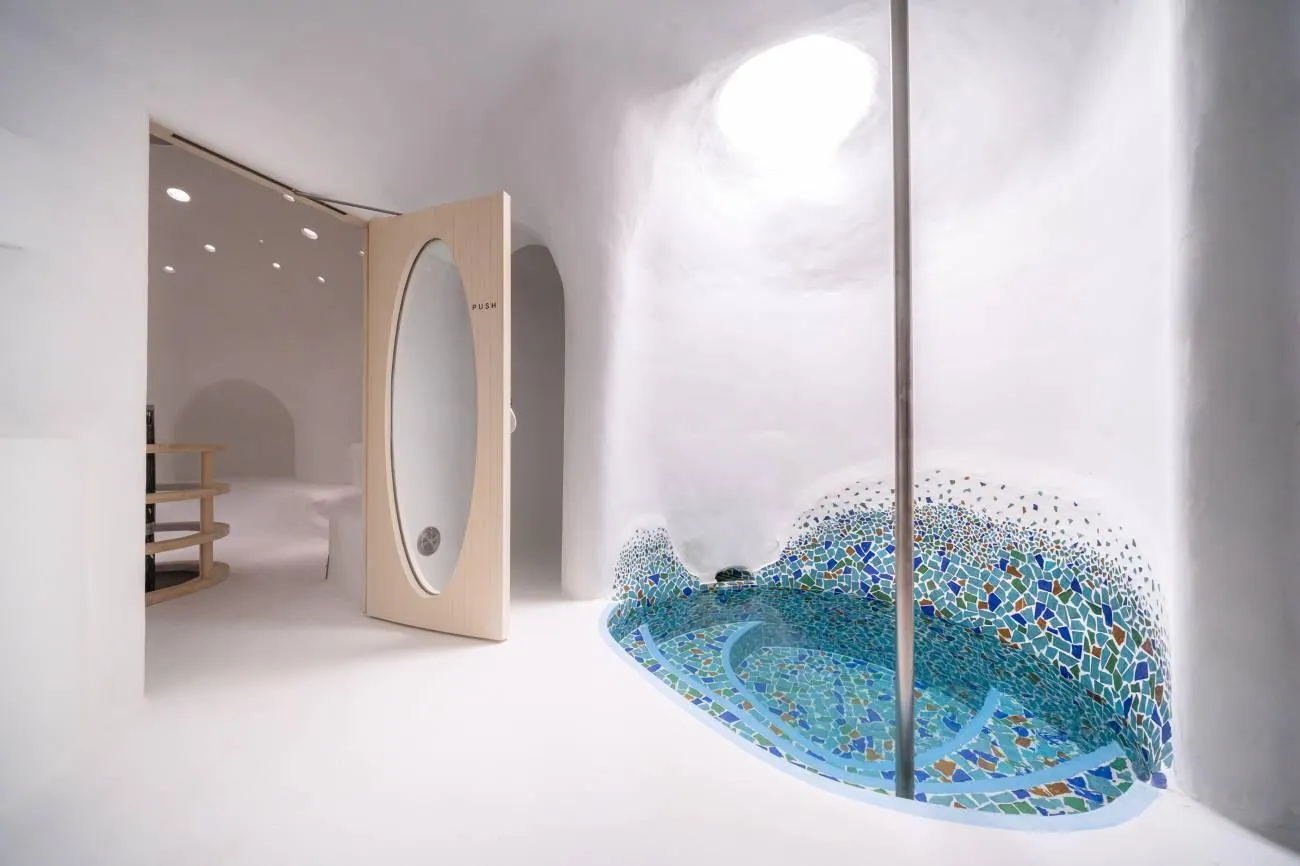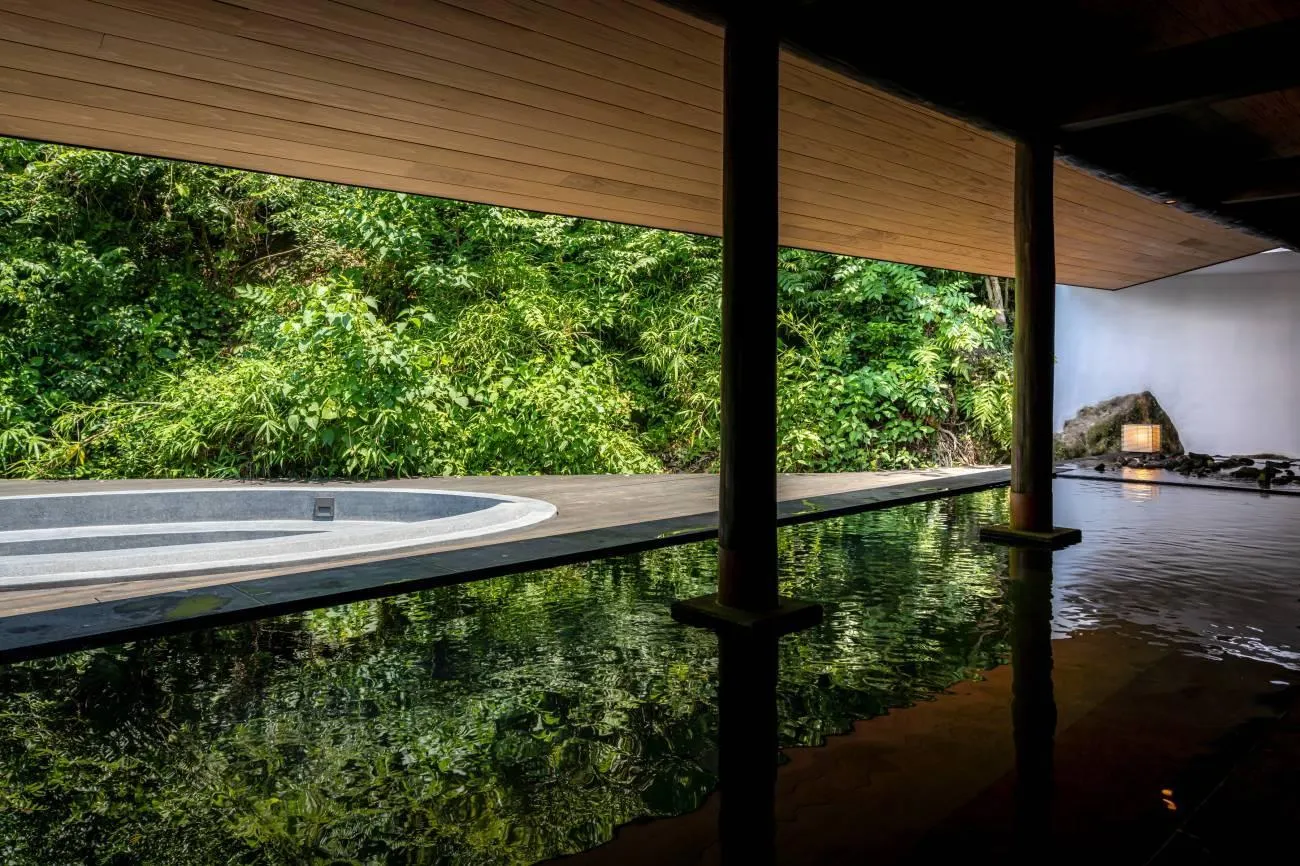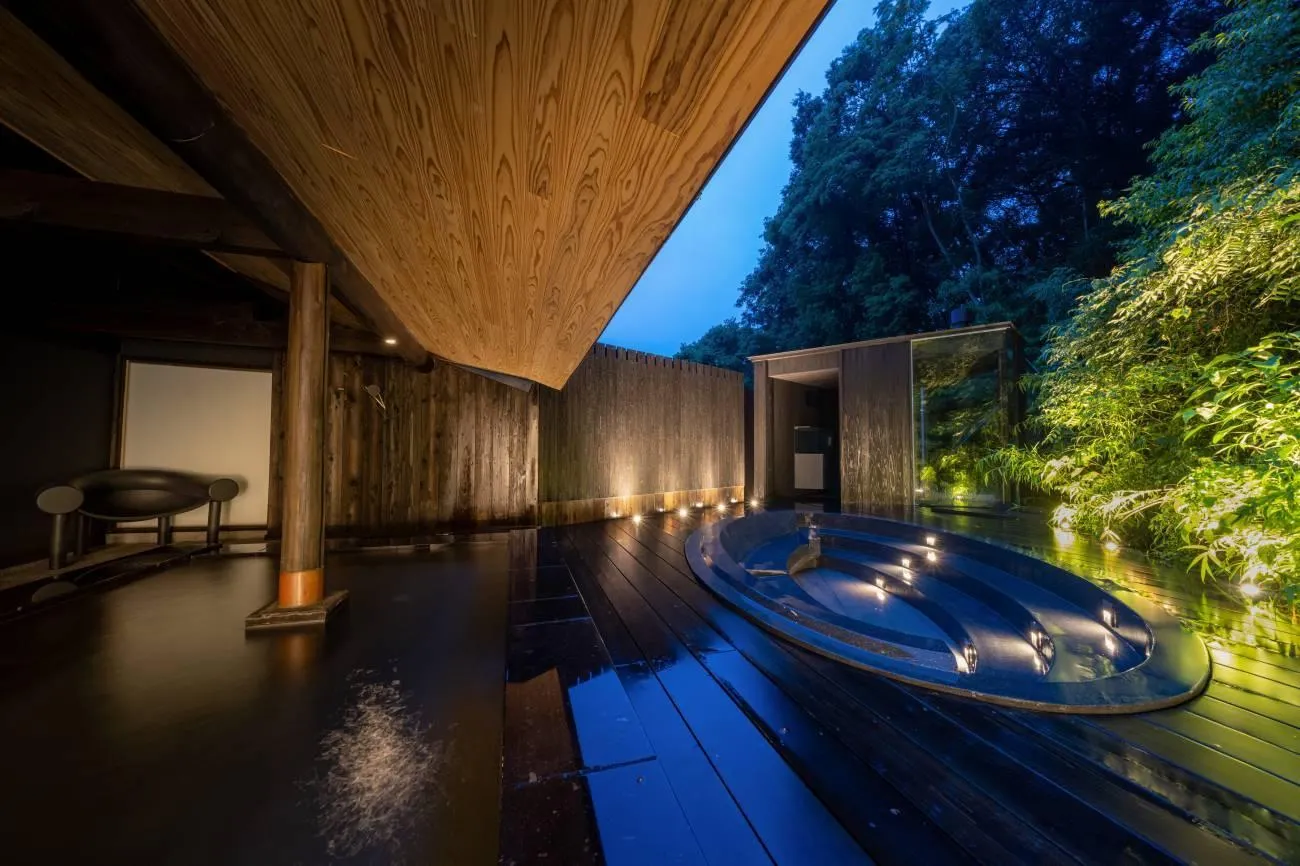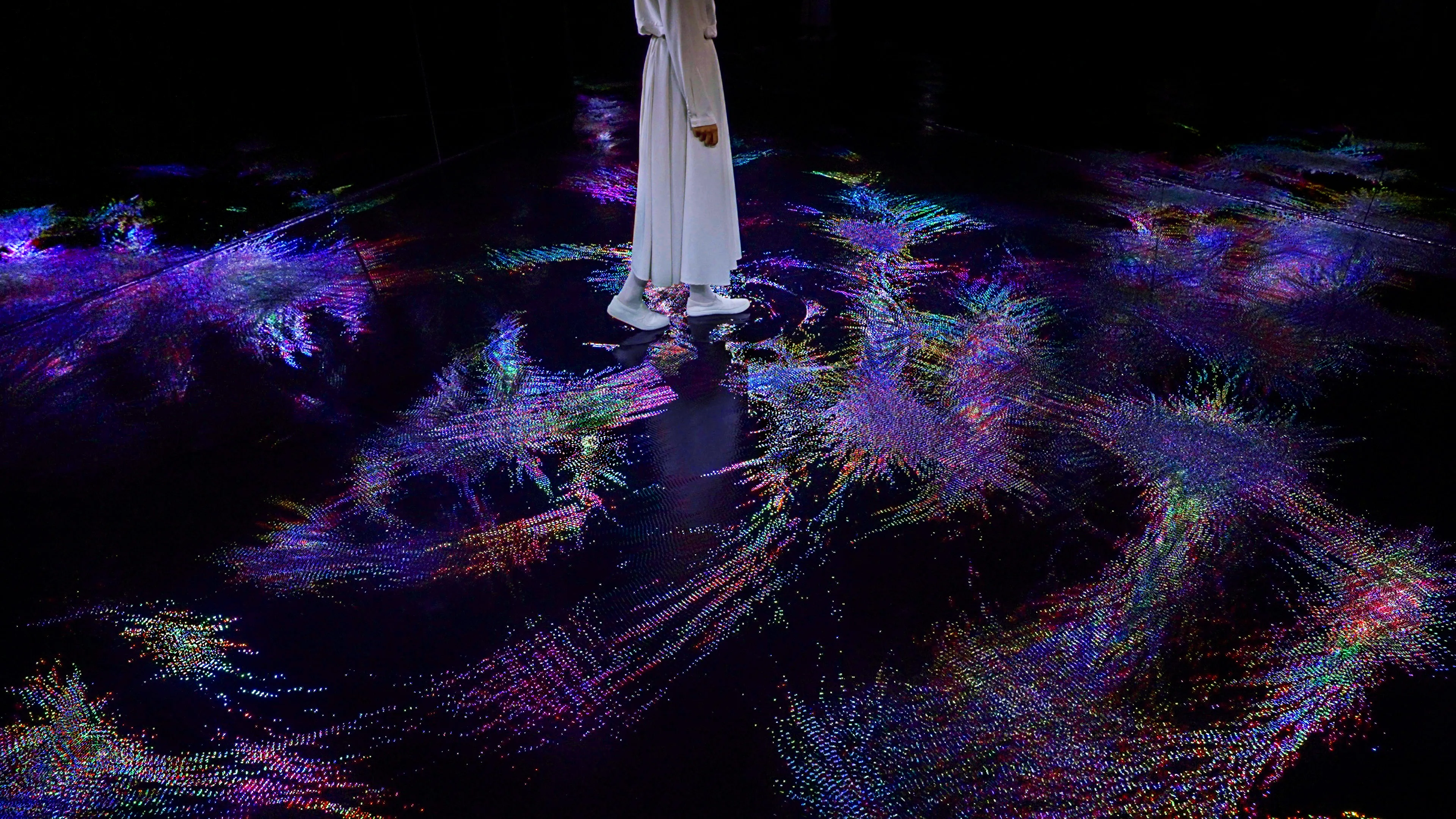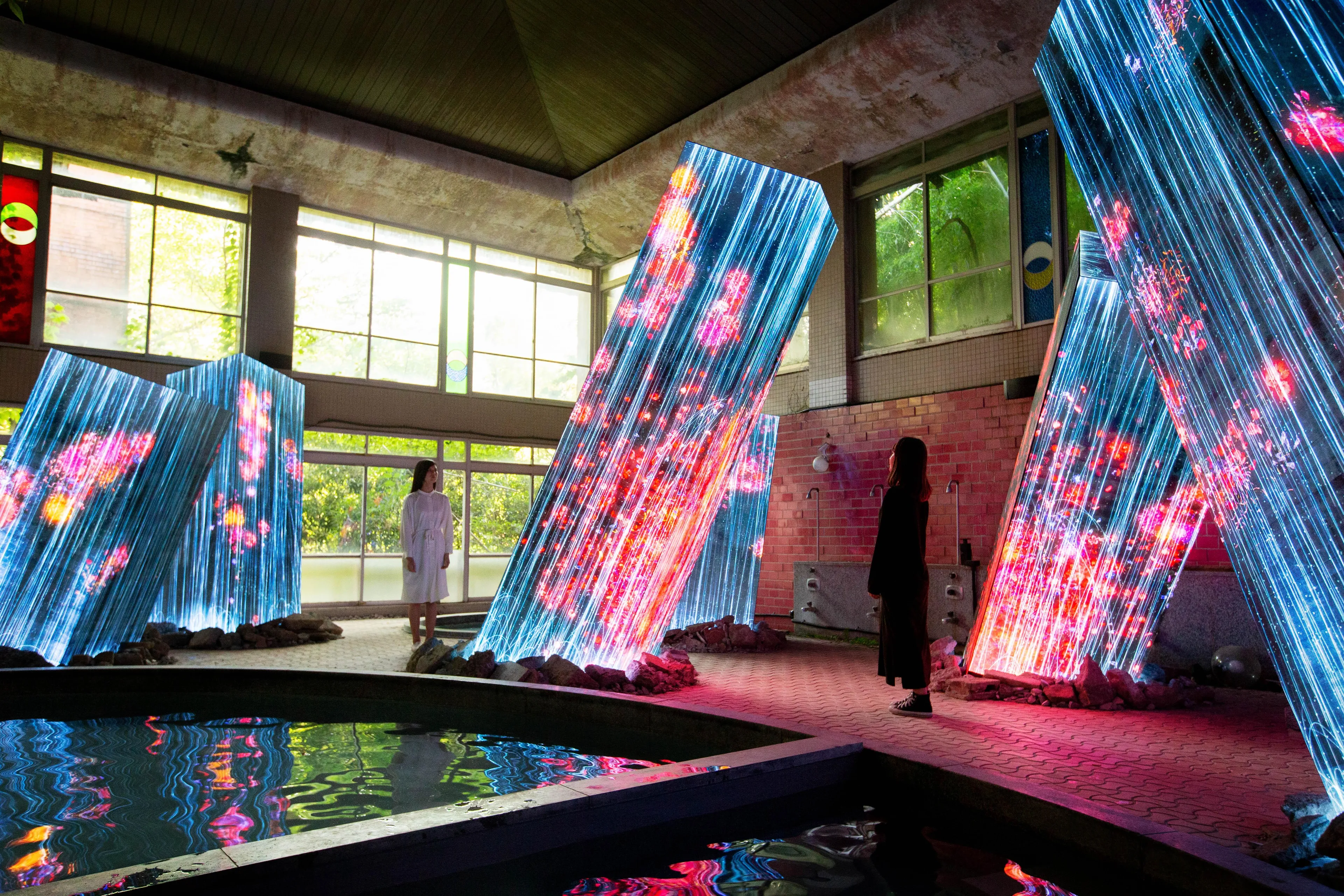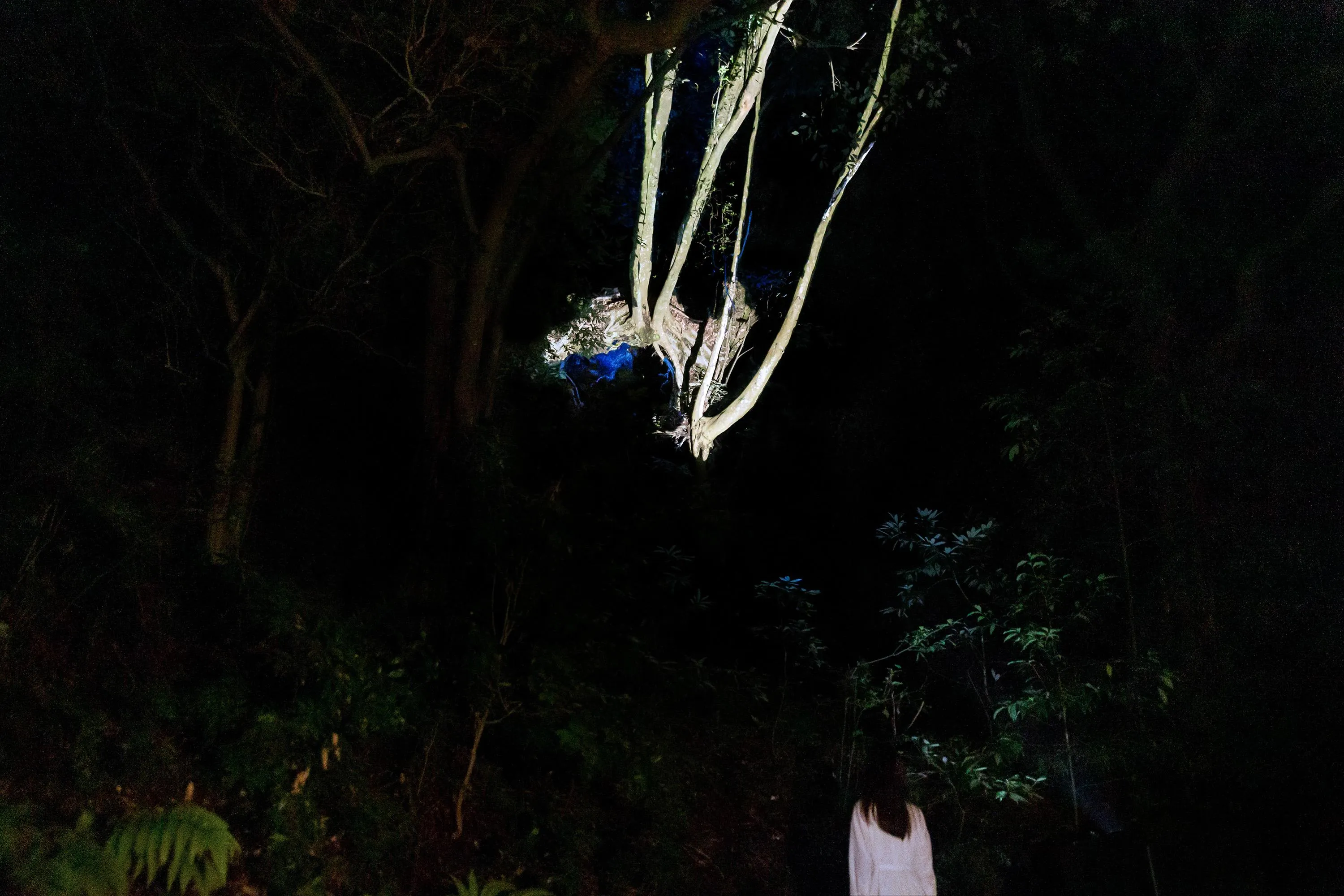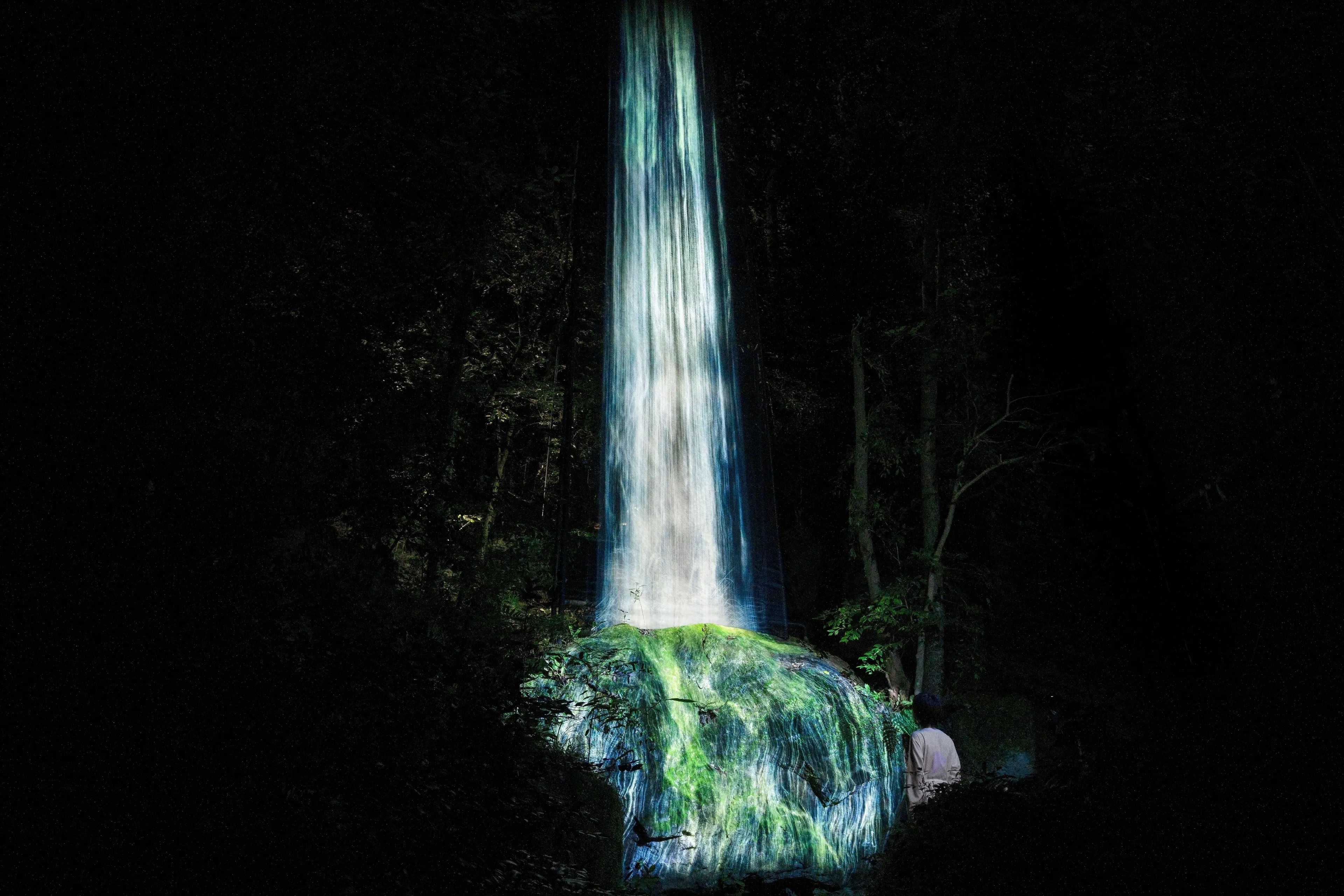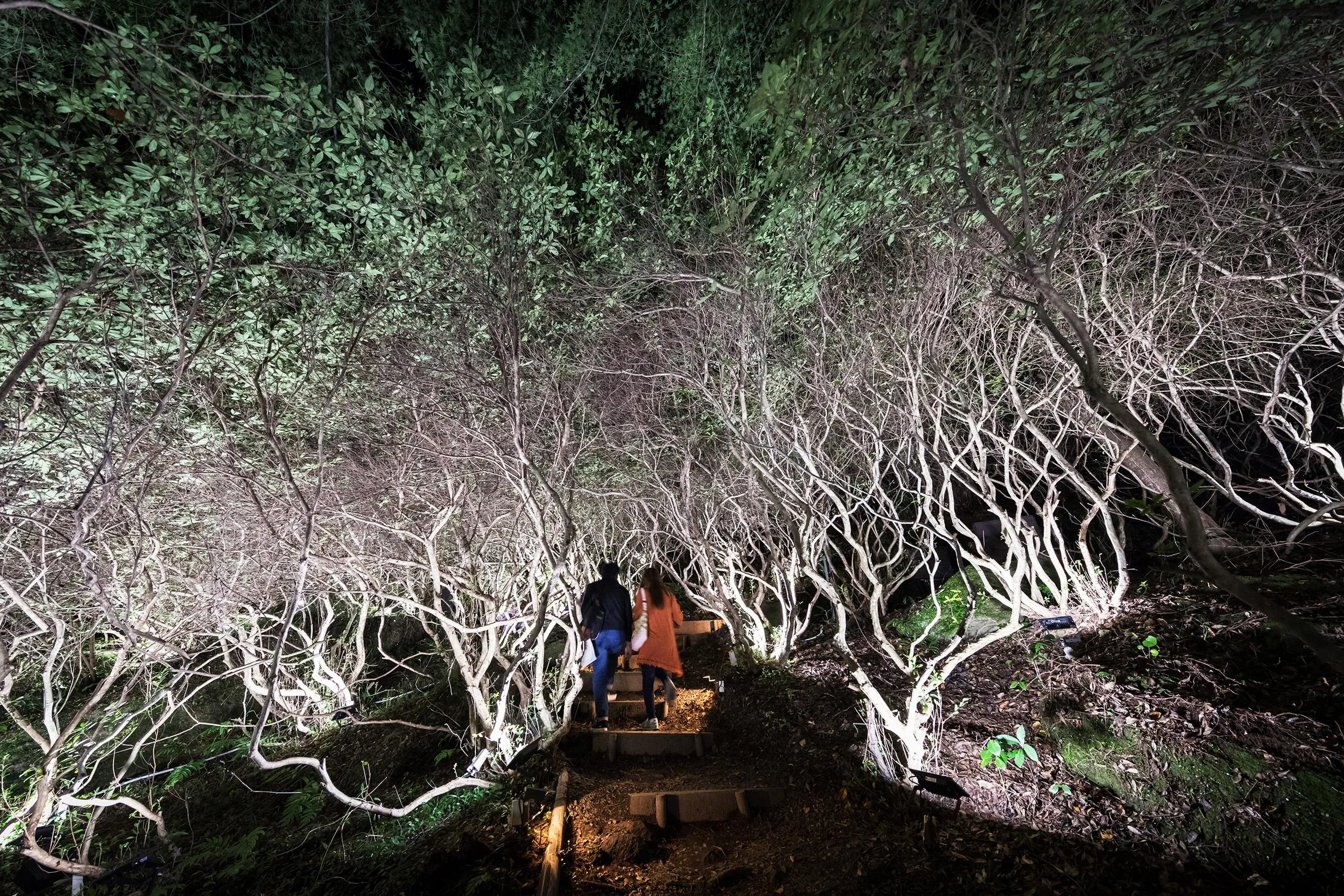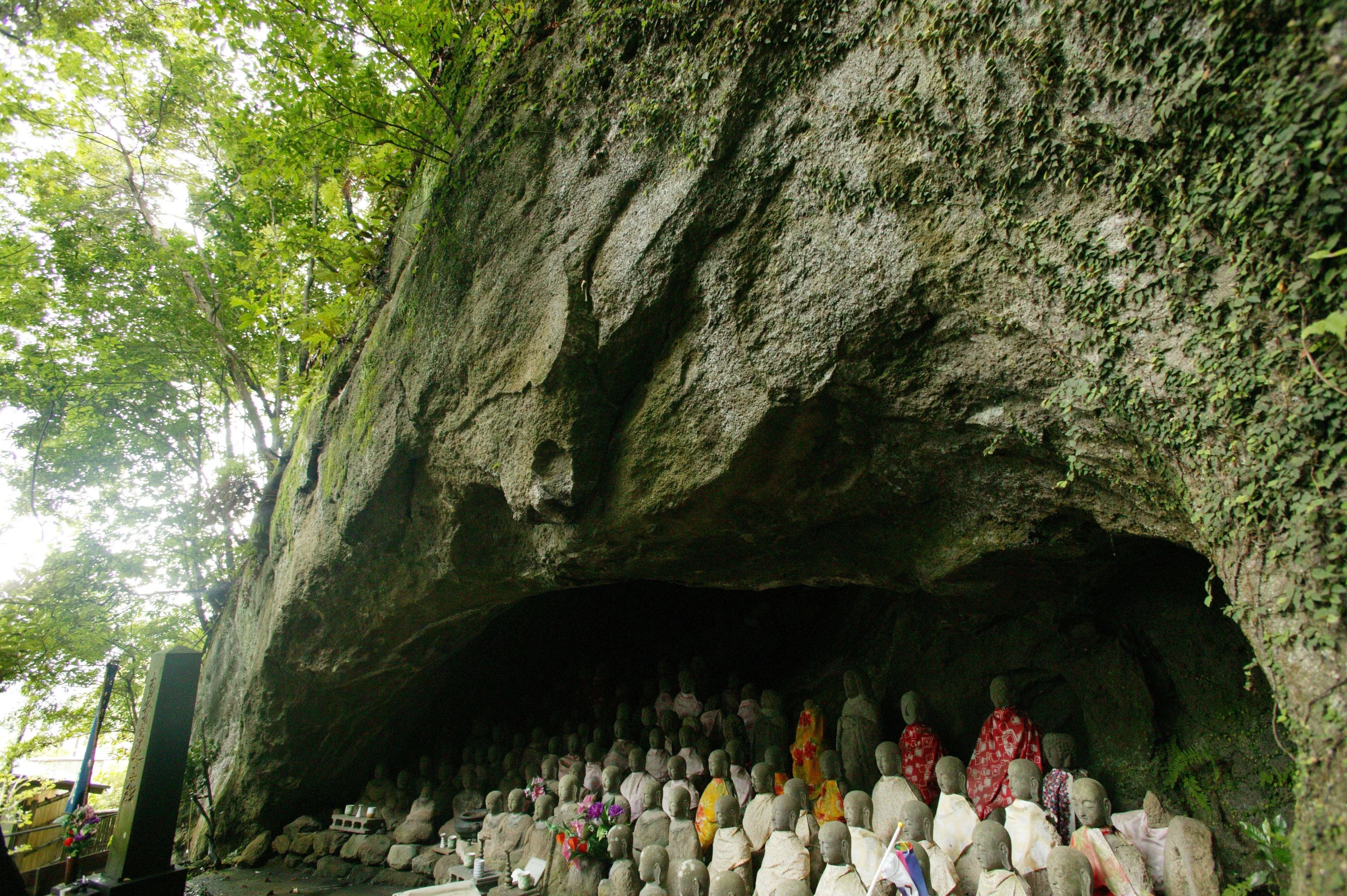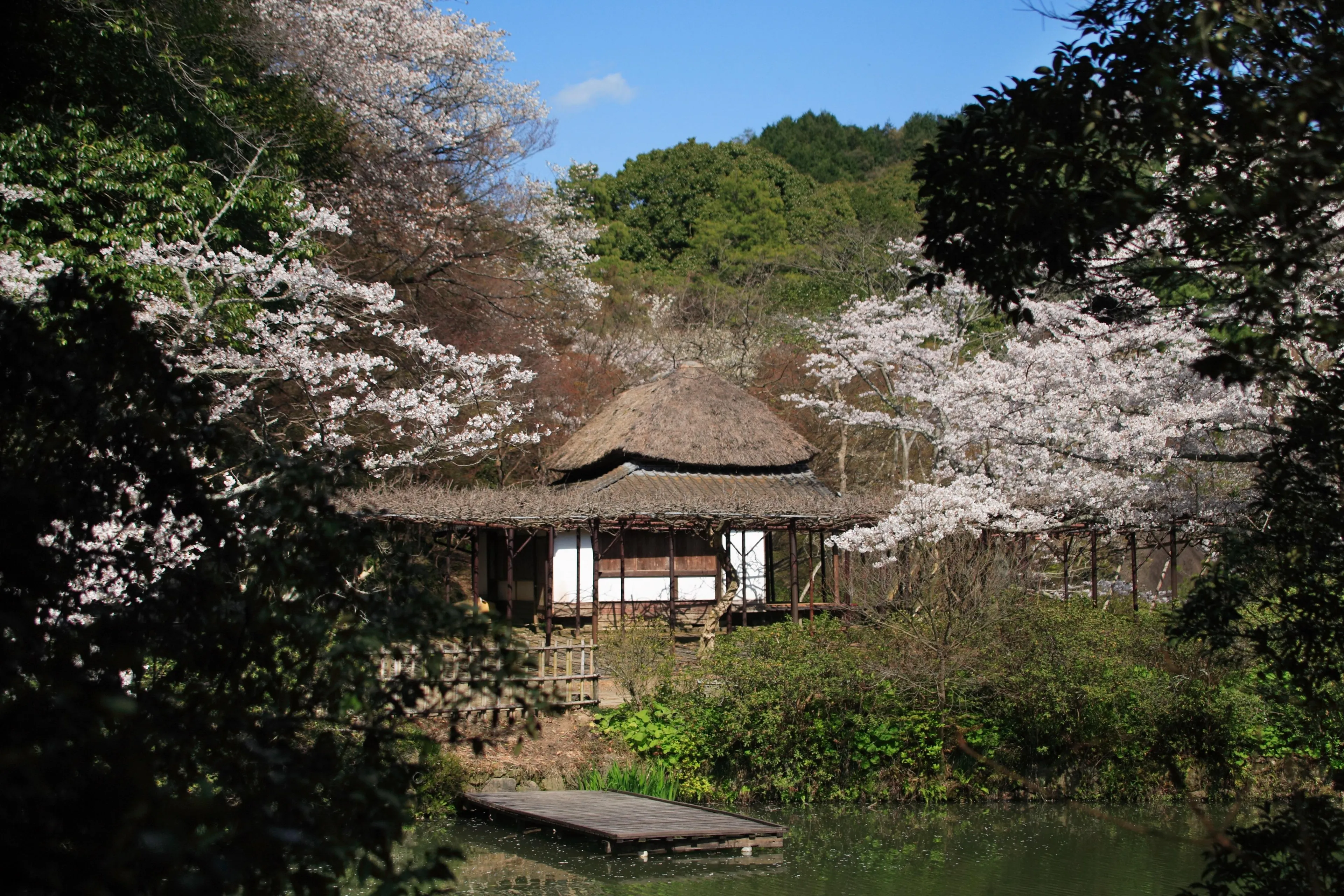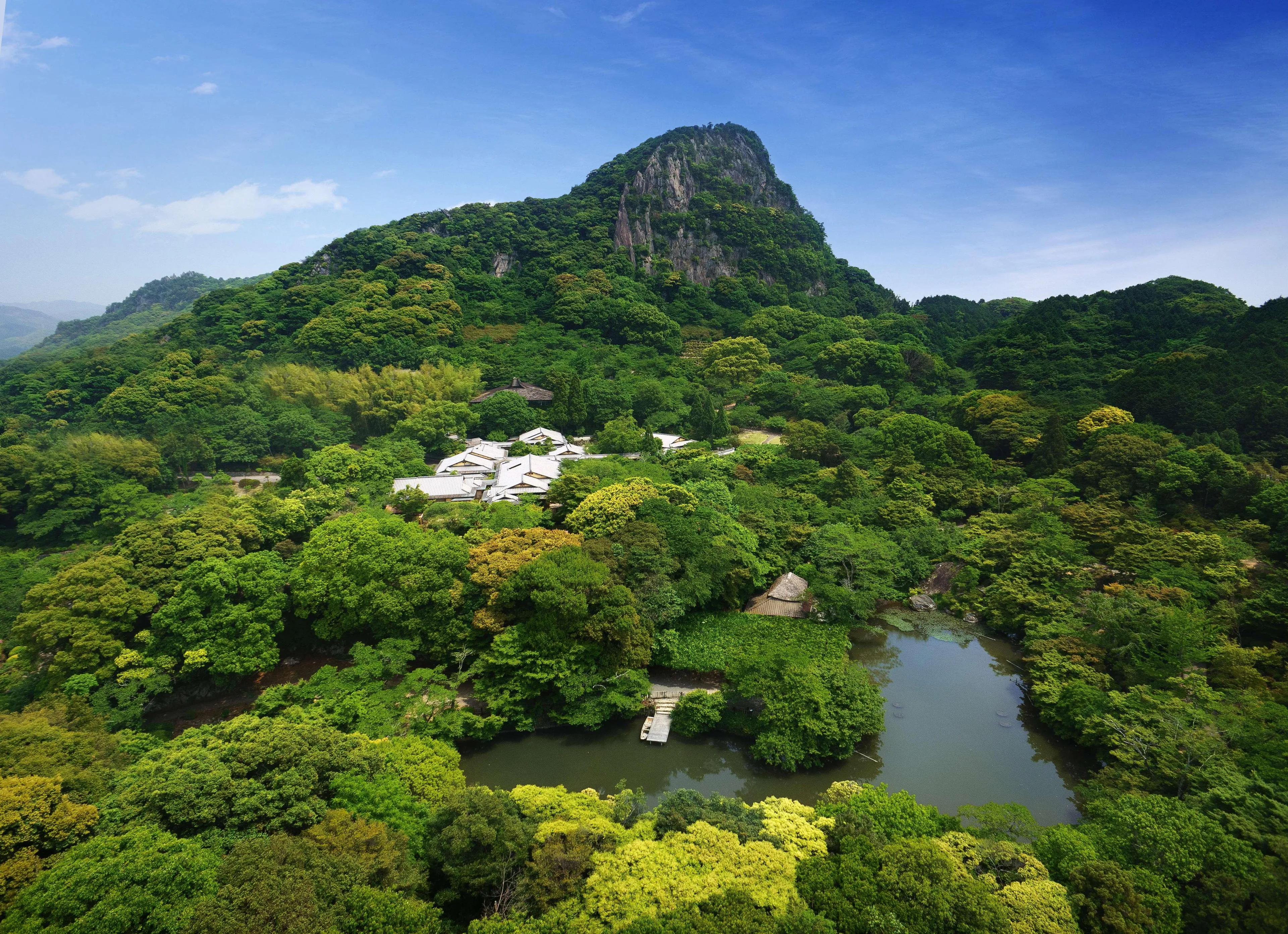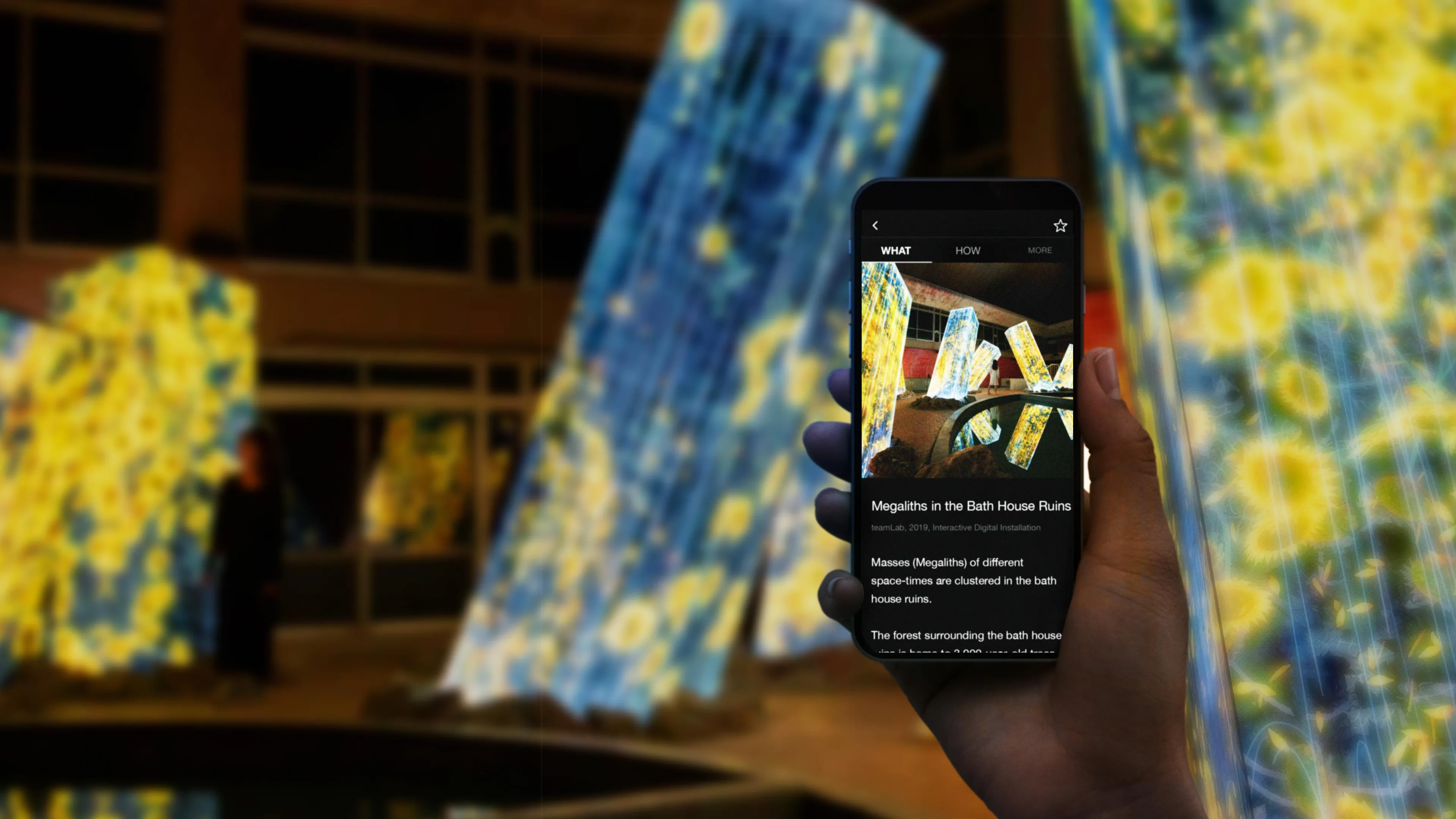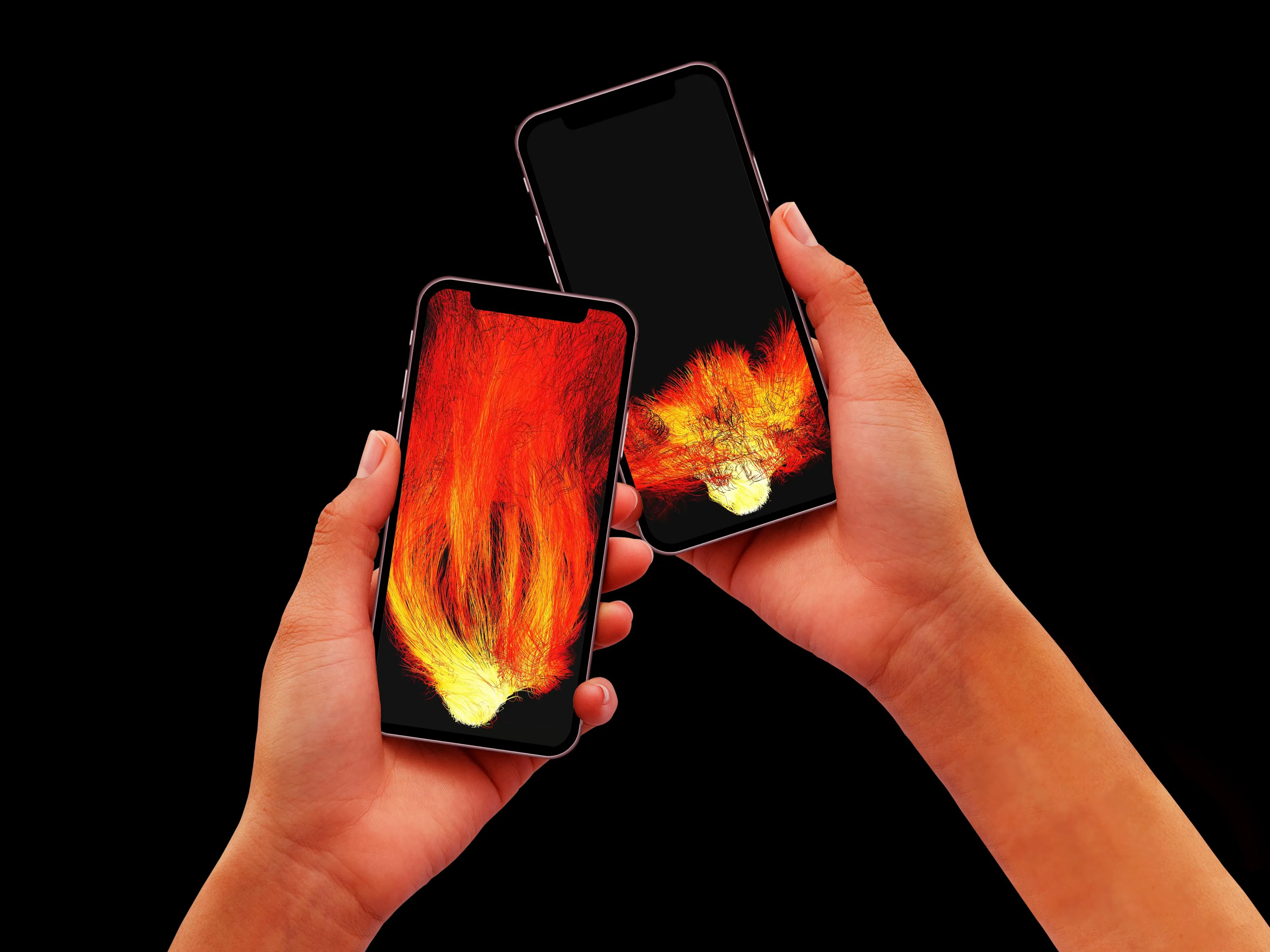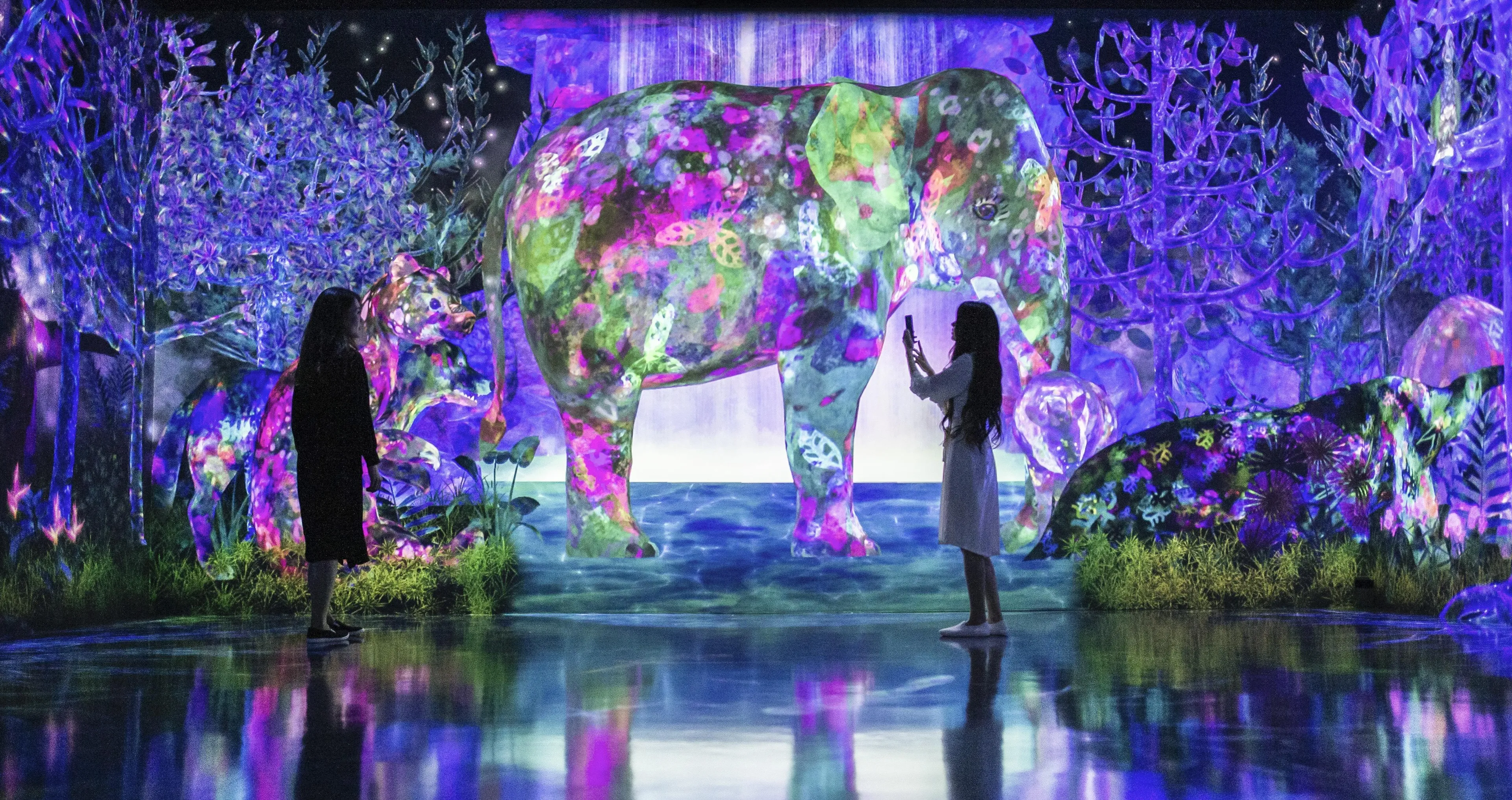The 500,000 square meter Mifuneyama Rakuen Park was created in 1845, during the end of the Edo period. Sitting on the borderline of the park is the famous 3,000-year-old sacred Okusu tree of Takeo Shrine. Also in the heart of the garden is another 300-year-old sacred tree. Knowing the significance of this, our forebears turned a portion of this forest into a garden, utilizing the trees of the natural forest. The border between the garden and the wild forest is ambiguous, and when wandering through the garden, before they know it, people will find themselves entering the woods and animal trails. Enshrined in the forest is the Inari Daimyojin deity surrounded by a collection of boulders almost supernatural in their formation. 1,300 years ago, the famous priest Gyoki came to Mifuneyama and carved 500 Arhats. Within the forest caves there are Buddha Figures that Gyoki carved directly into the rock face that still remain today.
The forest, rocks, and caves of Mifuneyama Rakuen have formed over a long time, and people in every age have sought meaning in them over the millennia. The park that we know today sits on top of this history. It is the ongoing relationship between nature and humans that has made the border between the forest and garden ambiguous, keeping this cultural heritage beautiful and pleasing.
Lost in nature, where the boundaries between man-made garden and forest are unclear, we are able to feel like we exist in a continuous, borderless relationship between nature and humans. It is for this reason that teamLab decided to create an exhibition in this vast, labyrinthine space, so that people will become lost and immersed in the exhibition and in nature.
We exist as a part of an eternal continuity of life and death, a process which has been continuing for an overwhelmingly long time. It is hard for us, however, to sense this in our everyday lives, perhaps because humans cannot easily conceptualize time for periods longer than their own lives. In other words, we can understand that the world of today is a continuation of the same world from yesterday, but we feel that the worlds from more distant ages, like the Edo Period, are different and non-continuous. There is a boundary in our understanding of the continuity of long periods of time.
When exploring the forest and seeing the forms and textures of megaliths and caves that formed over eons, we recognize that this long period of time continued until today. The existence of these forms can transcend the boundaries of our understanding of the eternal continuity of life.
teamLab's project, Digitized Nature, explores how nature can become art. The concept of the project is that non-material digital technology can turn nature into art without harming it.
The artworks explore how the existence of these forms can be used as they are to create a place where we can transcend the boundary in our understanding of the continuity of time and feel the long, long continuity of life. Using these existences that embody long periods of time as they are, we can experiment with expressing this eternal continuous life even today and continue to accumulate meaning in this place.
teamLab
Story behind VOLVO contribution
Although teamLab and Volvo are in different fields, we have always resonated with the fact that we are both trying to create new values. teamLab creates many surprises and excitement with its innovative art experiences. Volvo, we always put “people” in center and act to protect environment and the future that surrounds us. Volvo's goal is to make all new cars electric by 2030 and to achieve climate neutrality by 2040.
The "VOLVO teamLab: A Forest Where Gods Live" is an expression of innovation that values what has remained unchanged through the ages, while being willing to change for the sake of the future. In our second year of sponsorship, in addition to the new artwork at Mifuneyama, there will be a satellite exhibit in Tokyo, and we hope that many people will enjoy this new experience of fusion of nature and technology.
Volvo Car Japan
